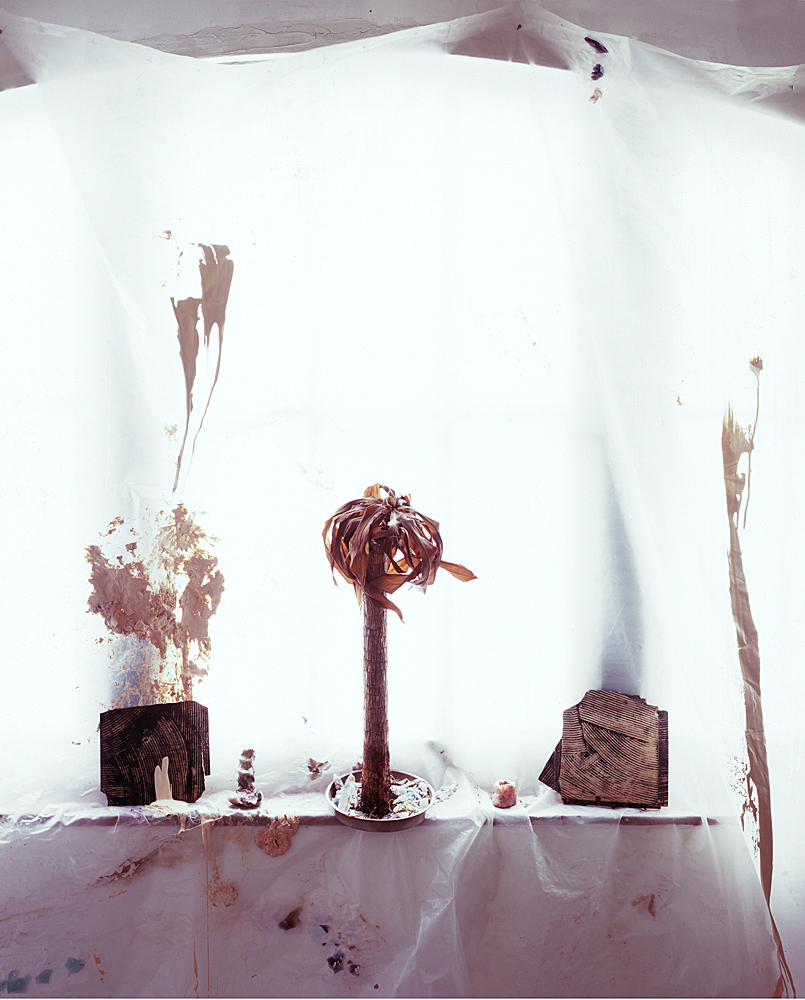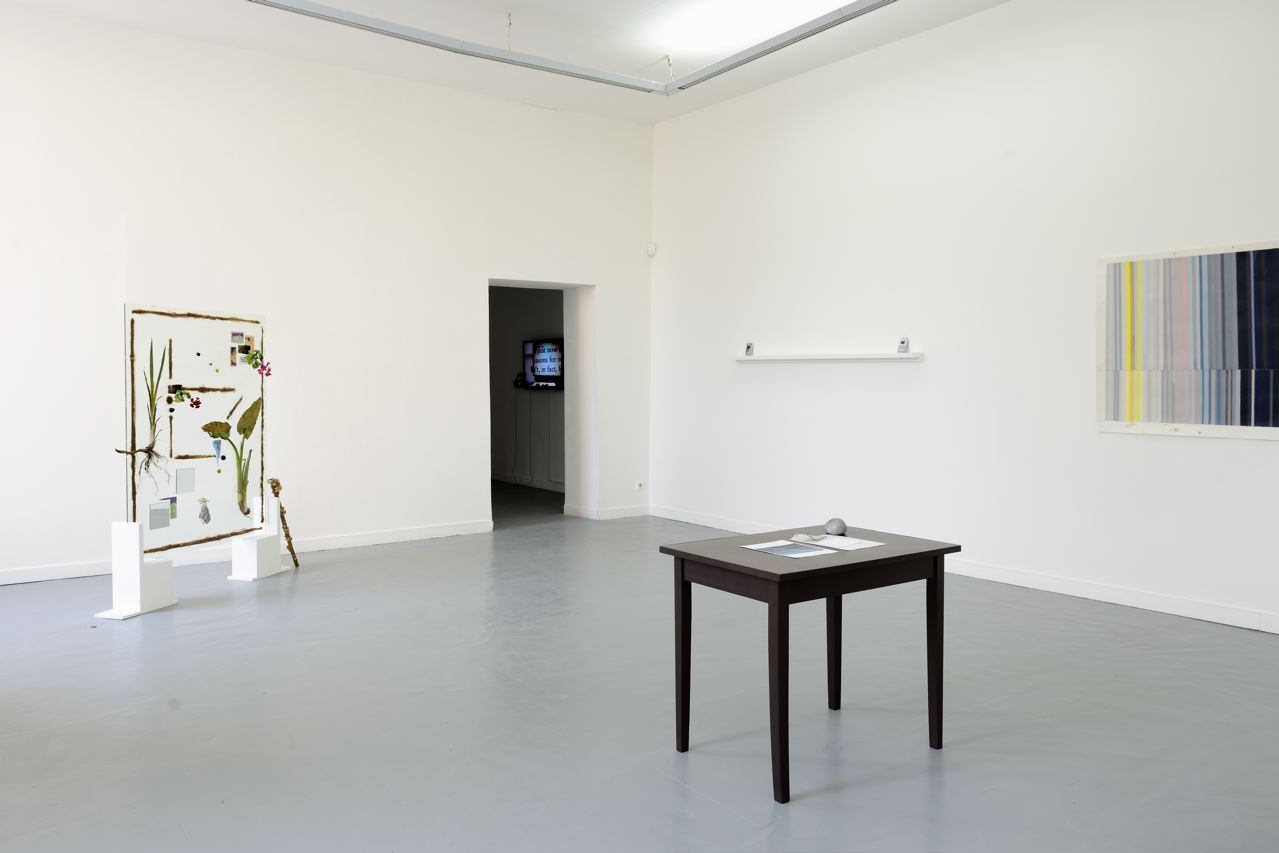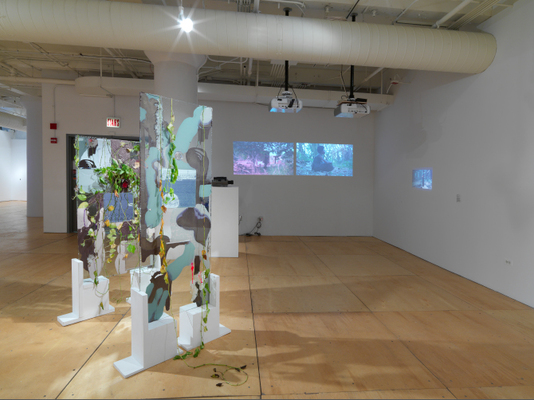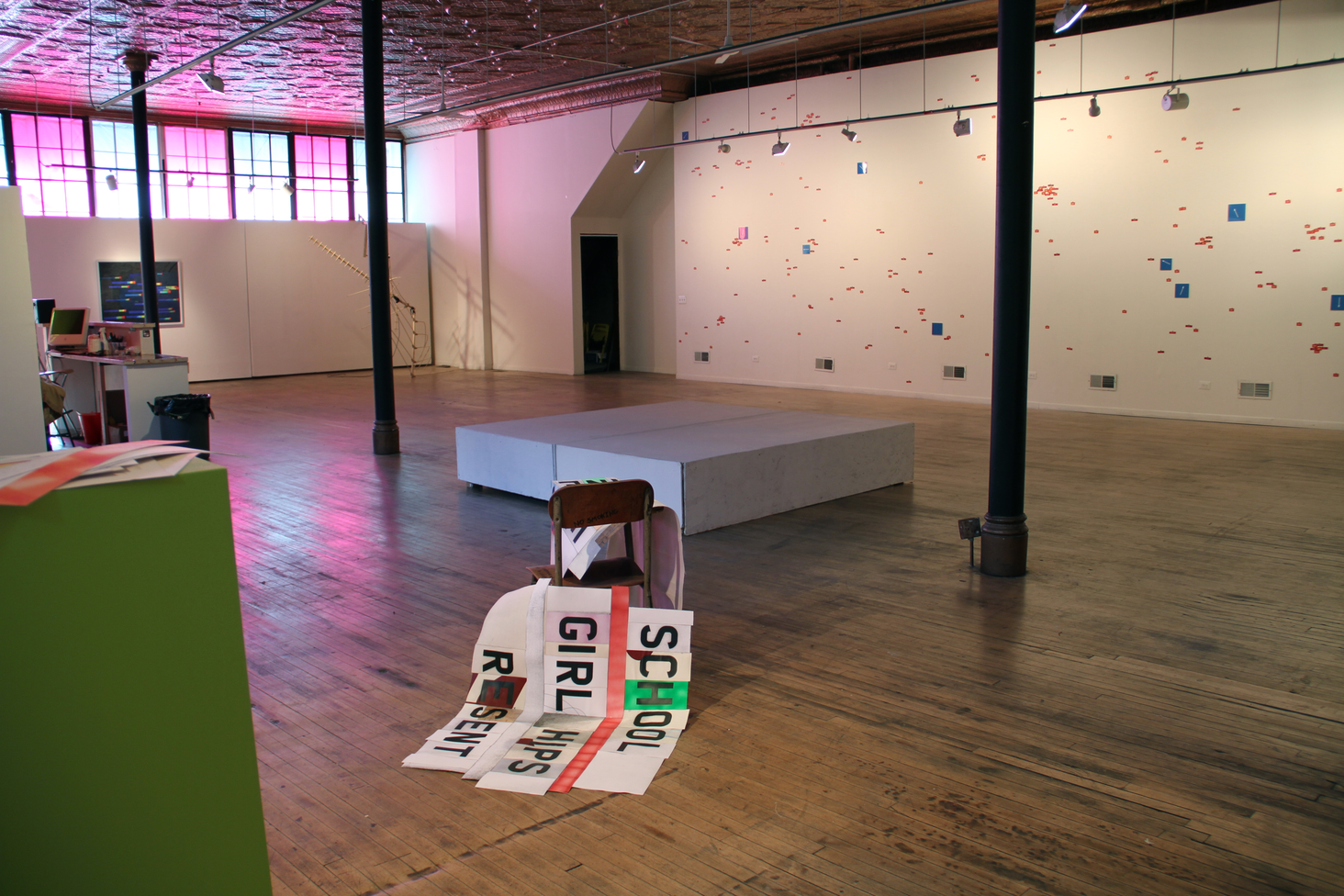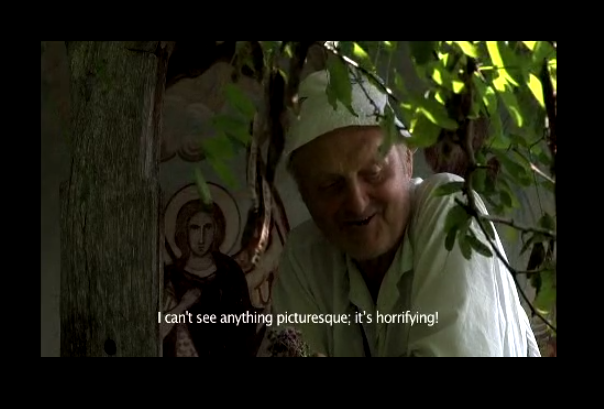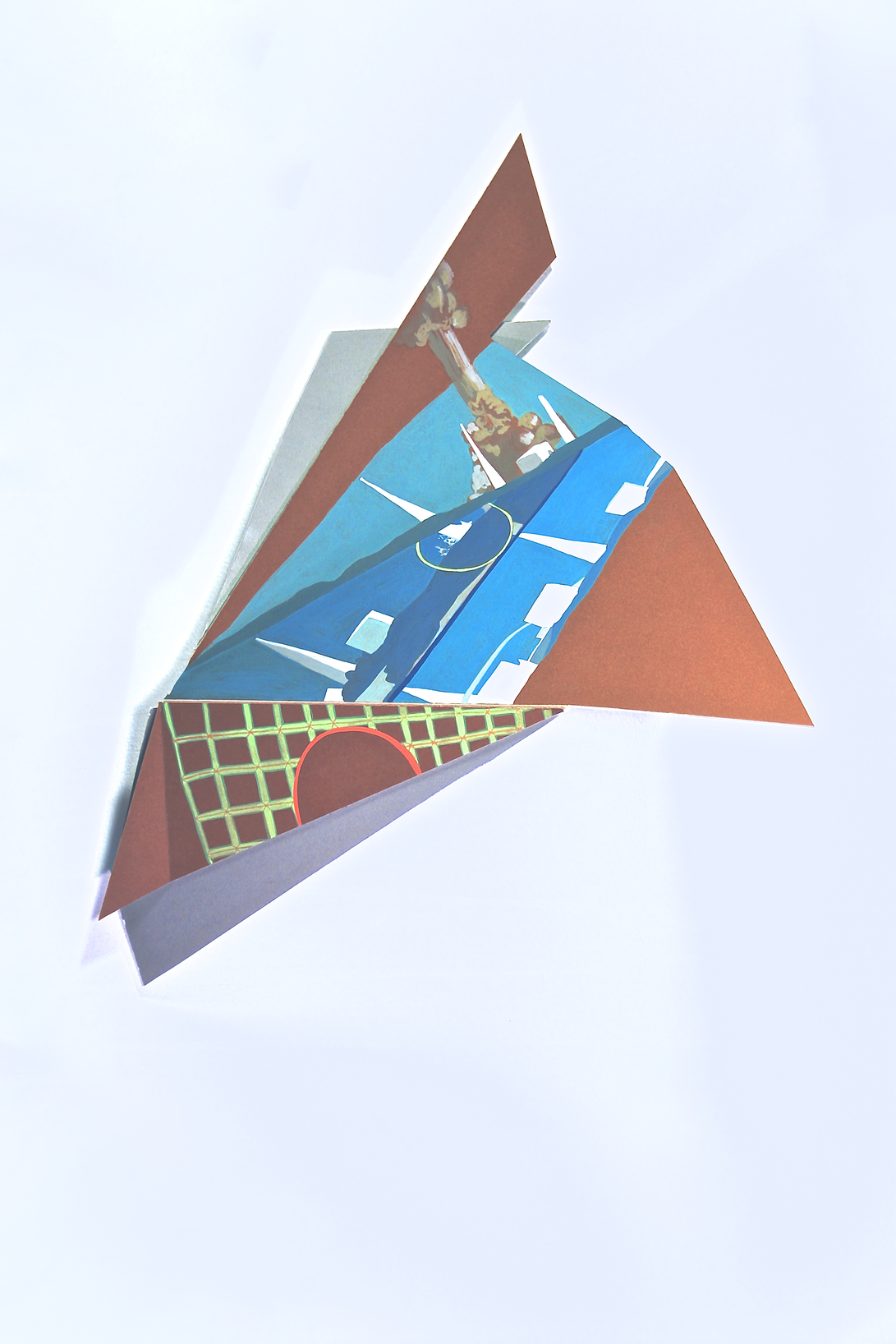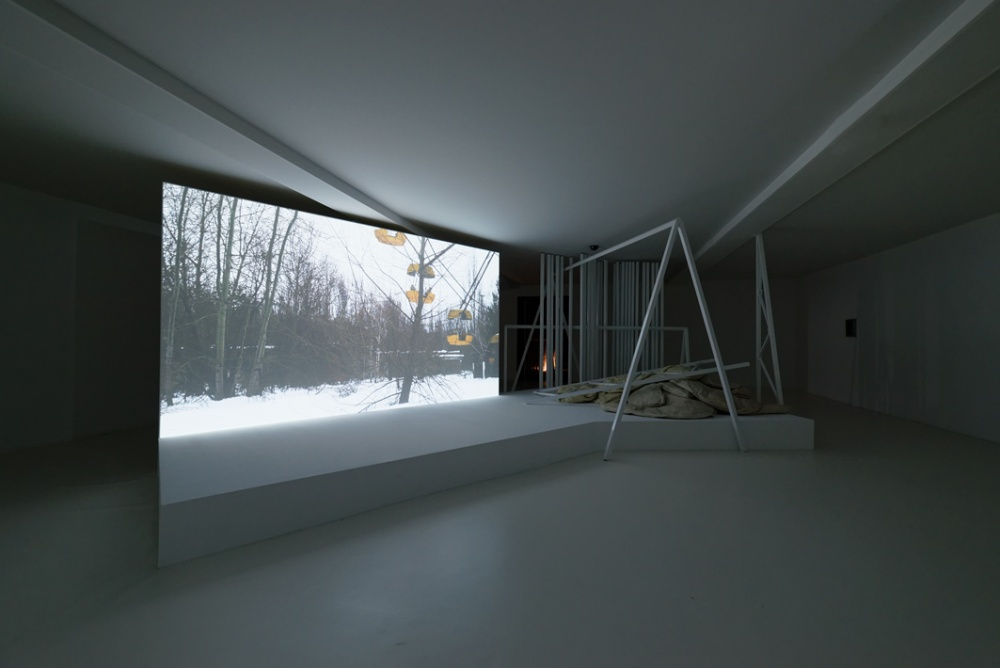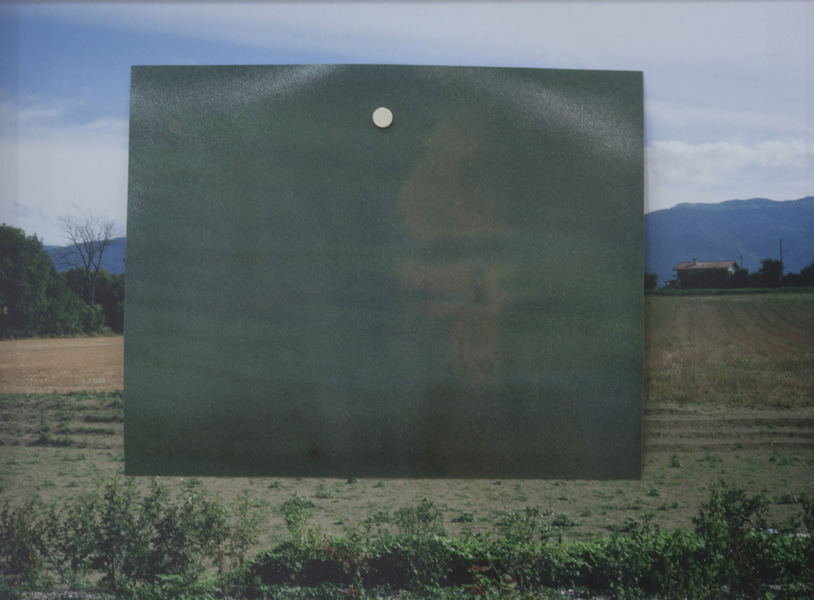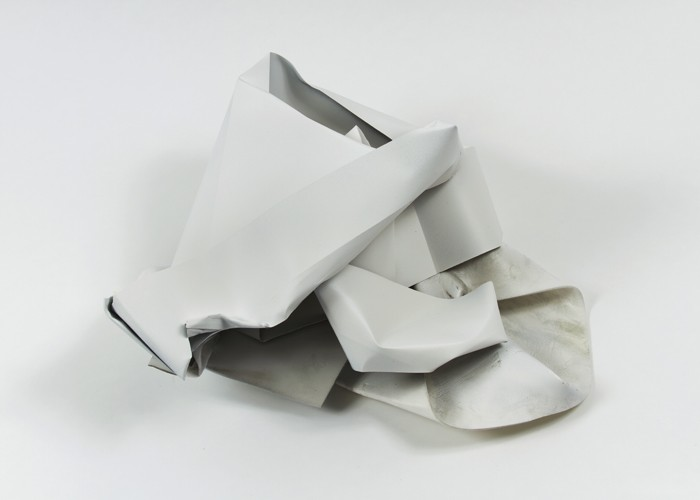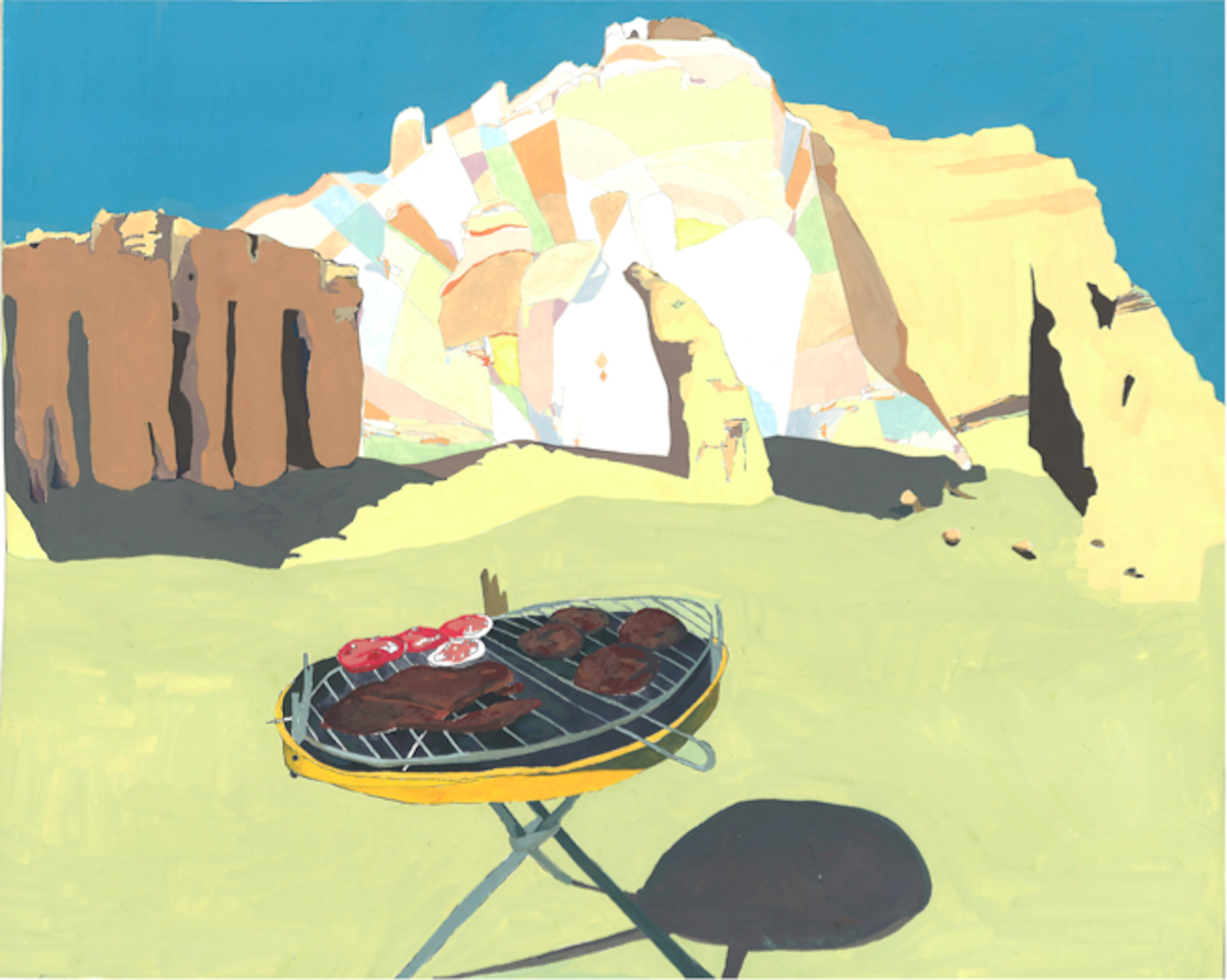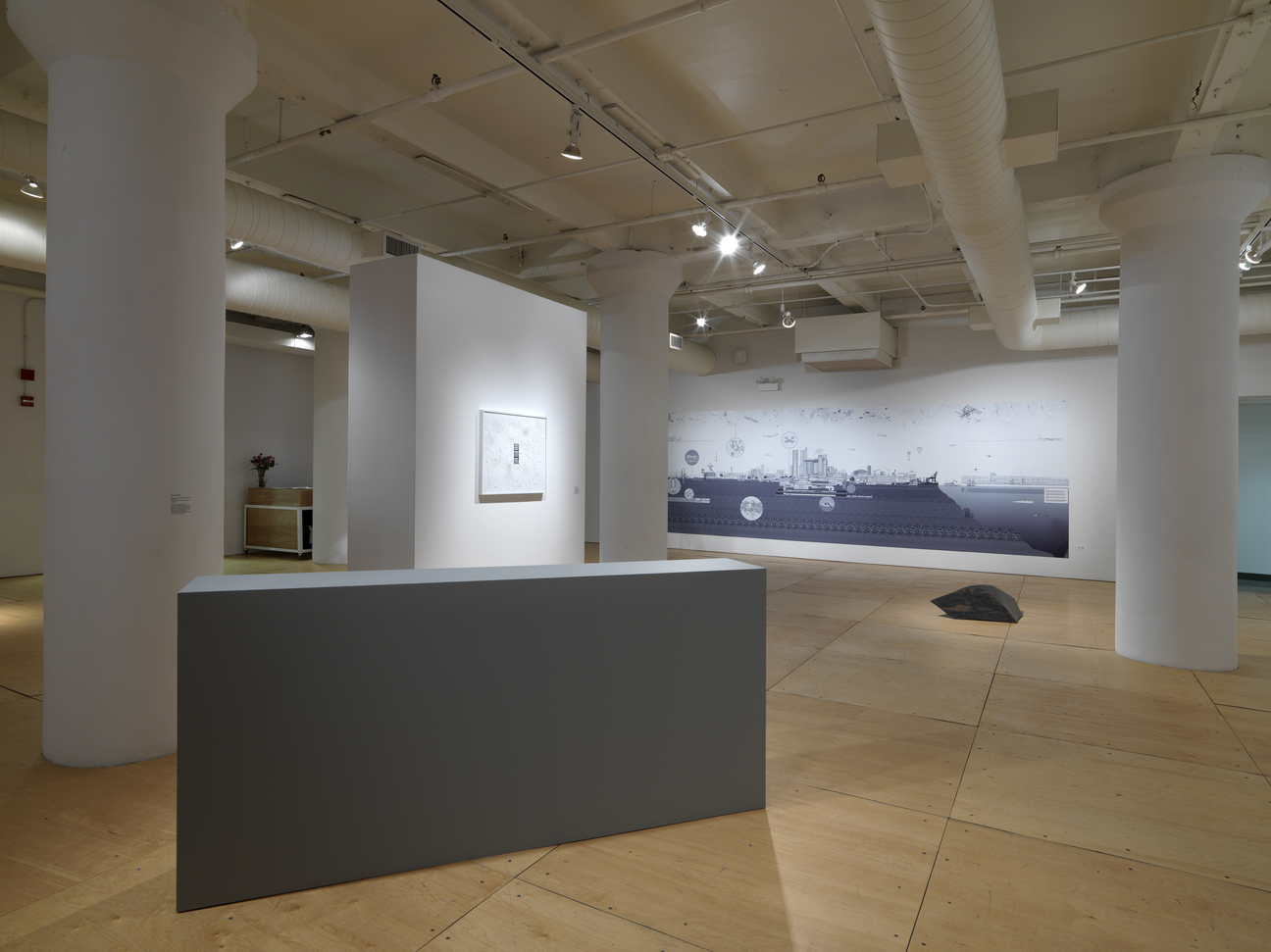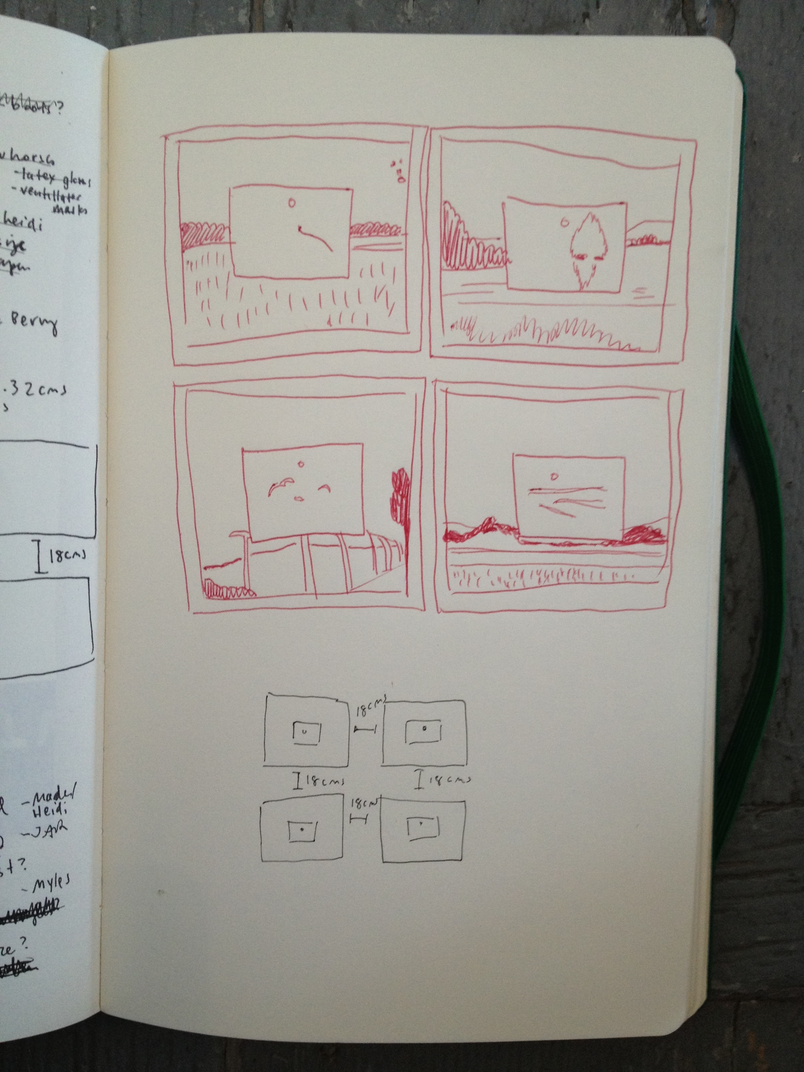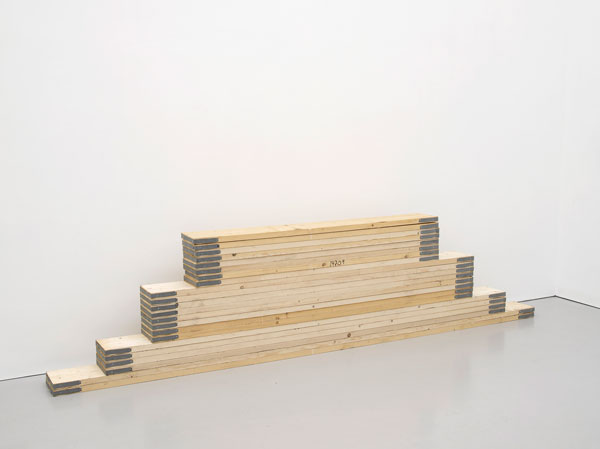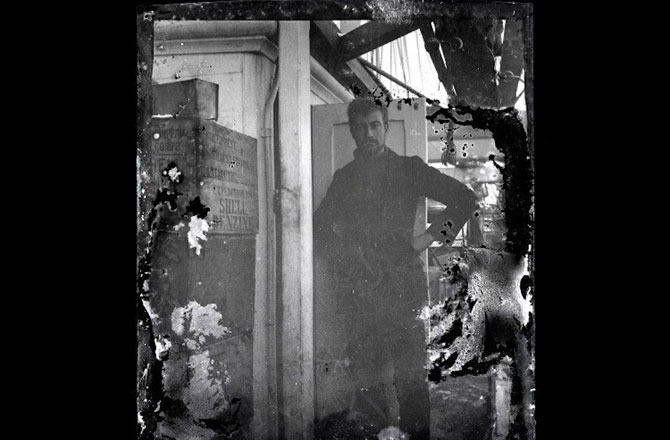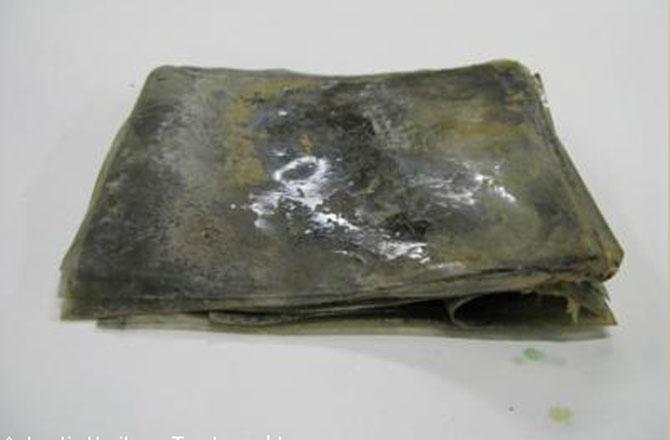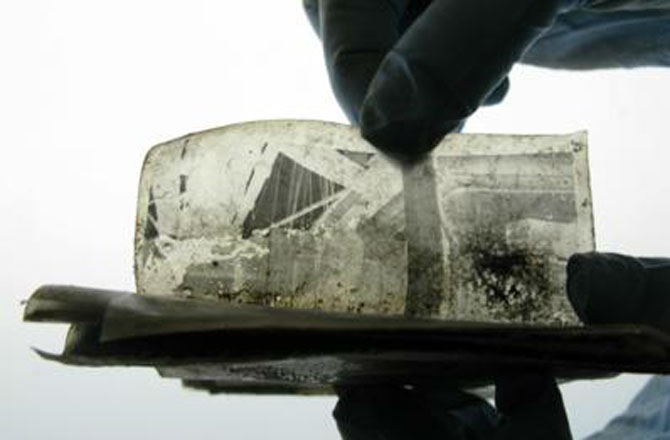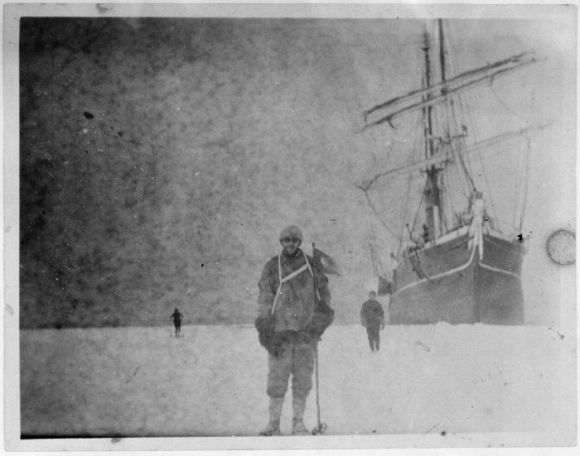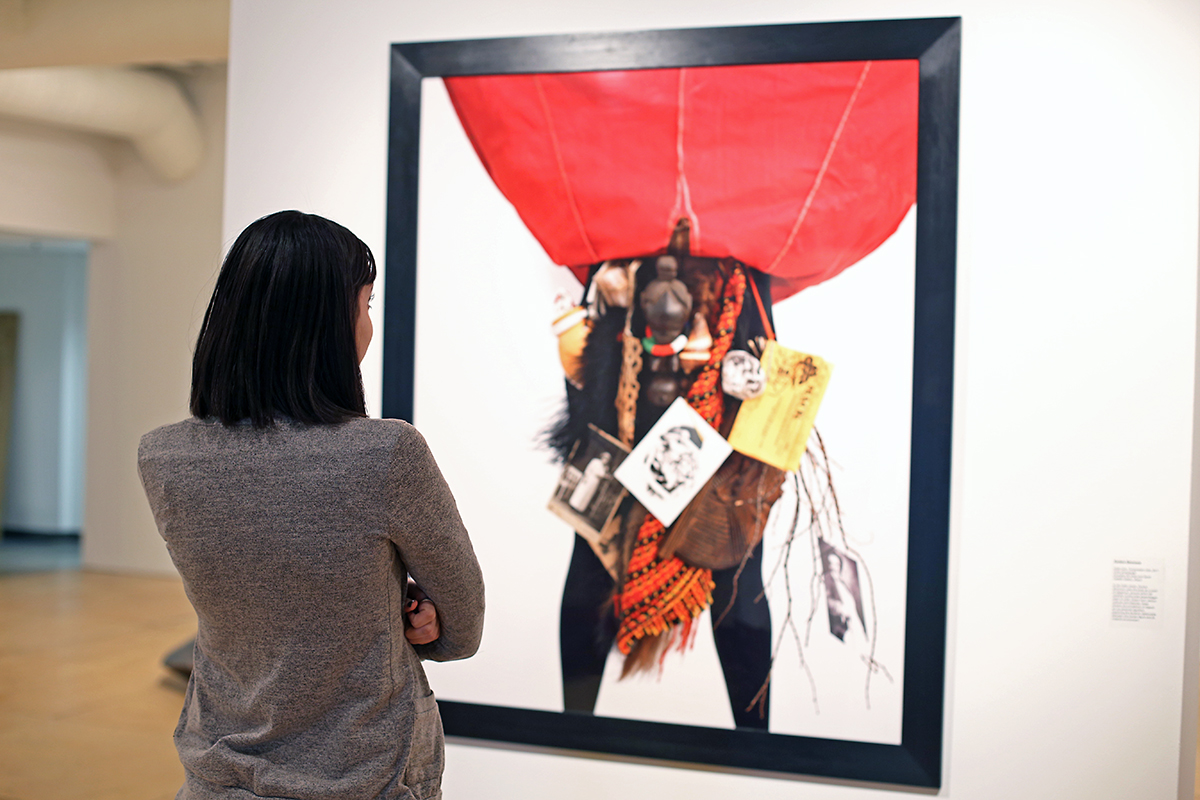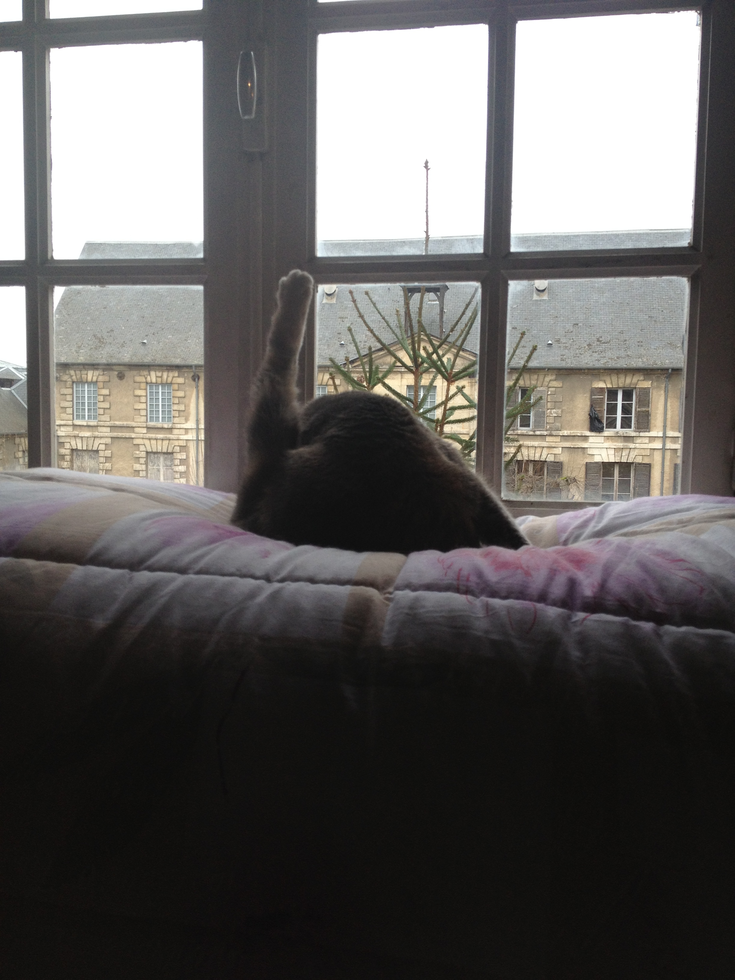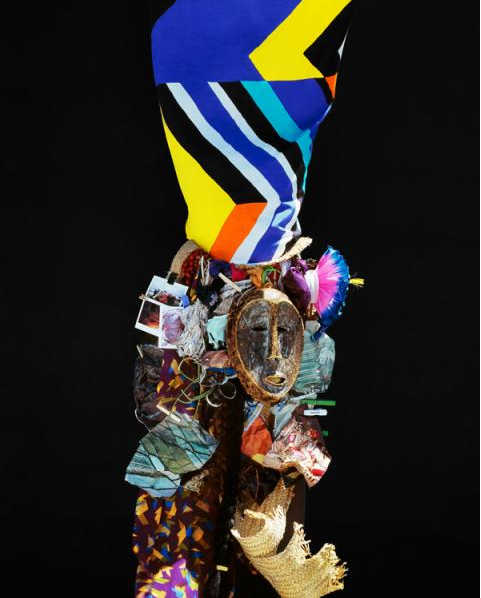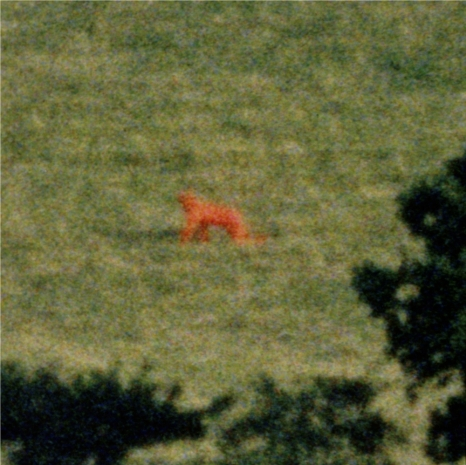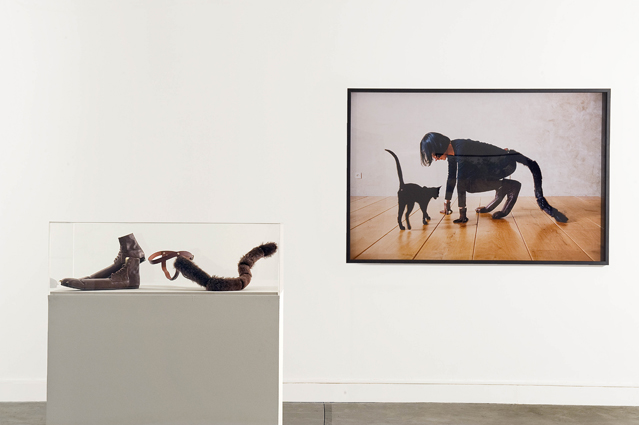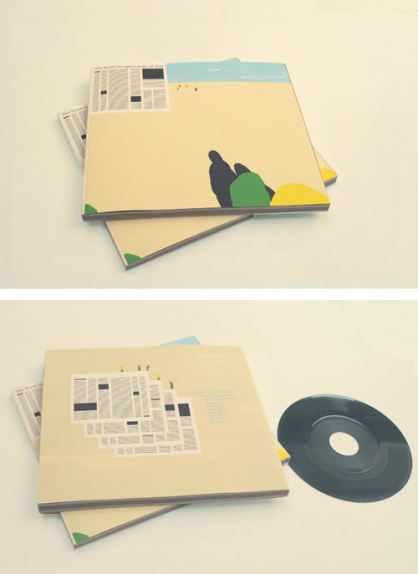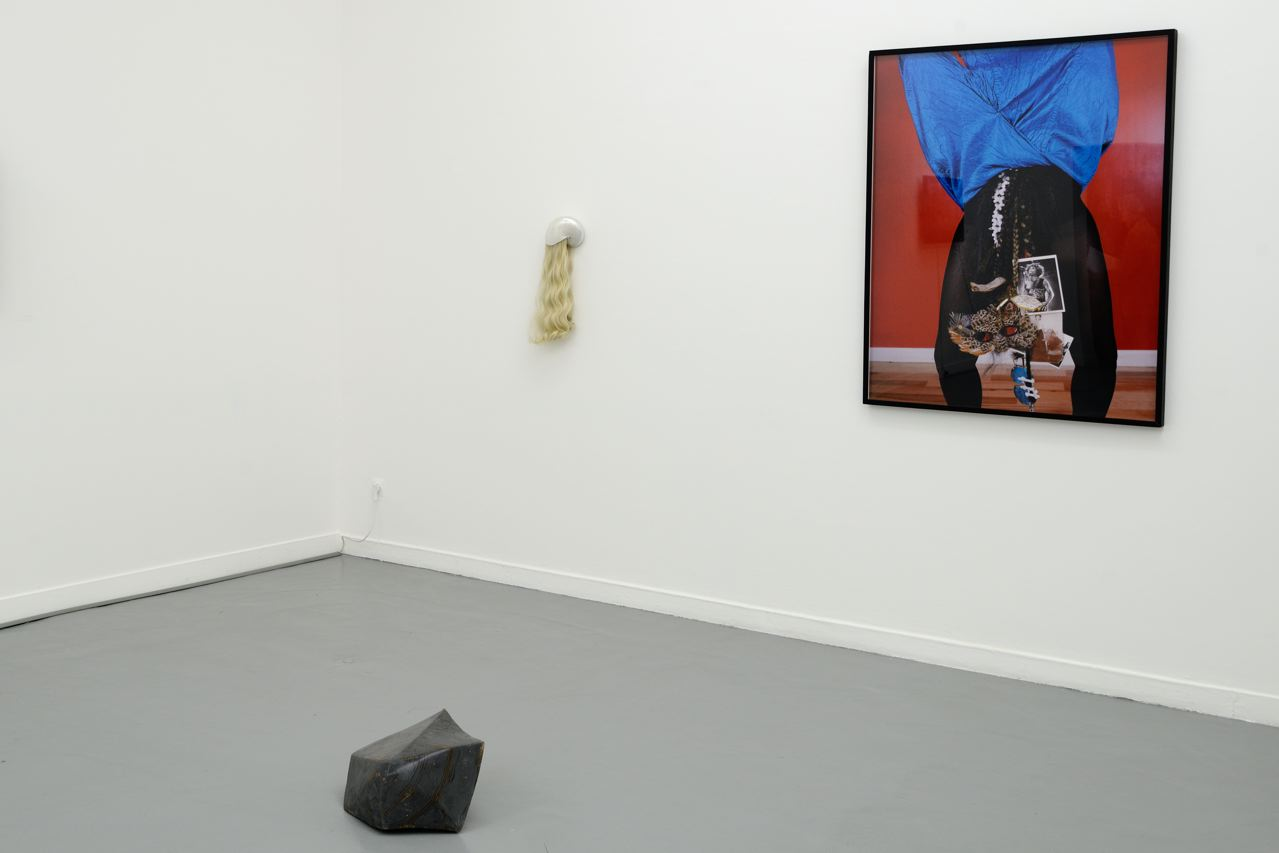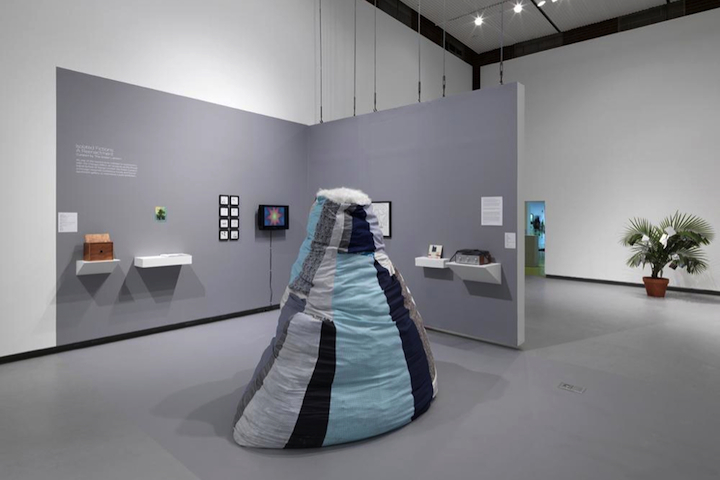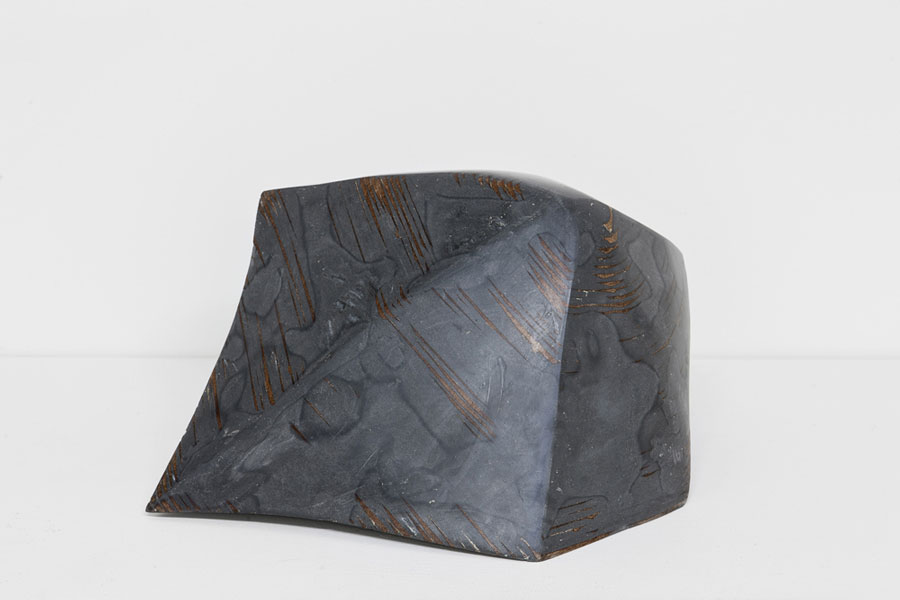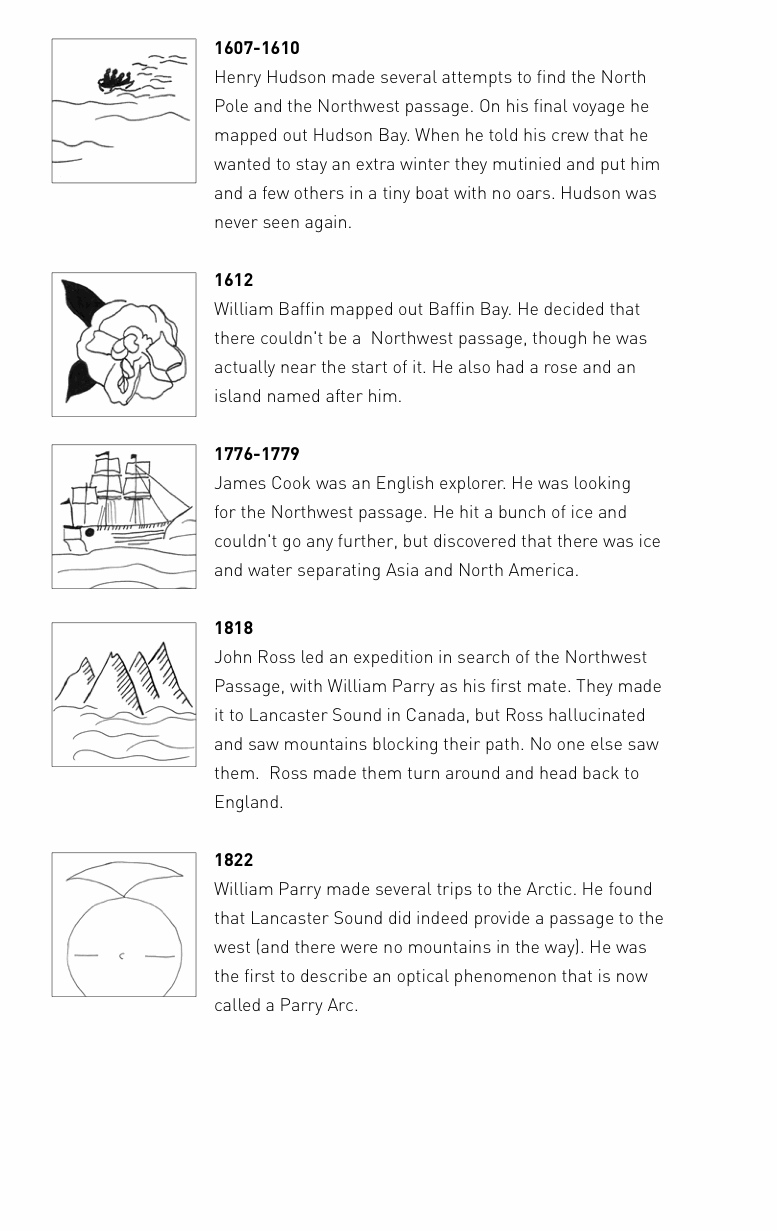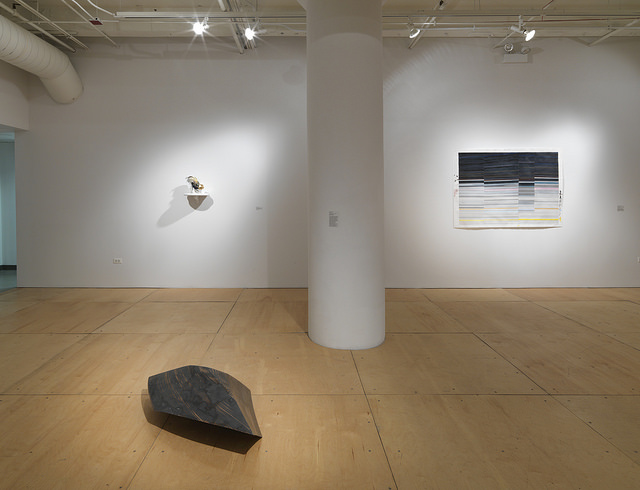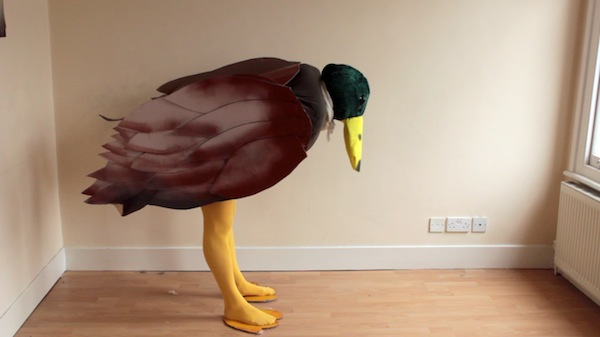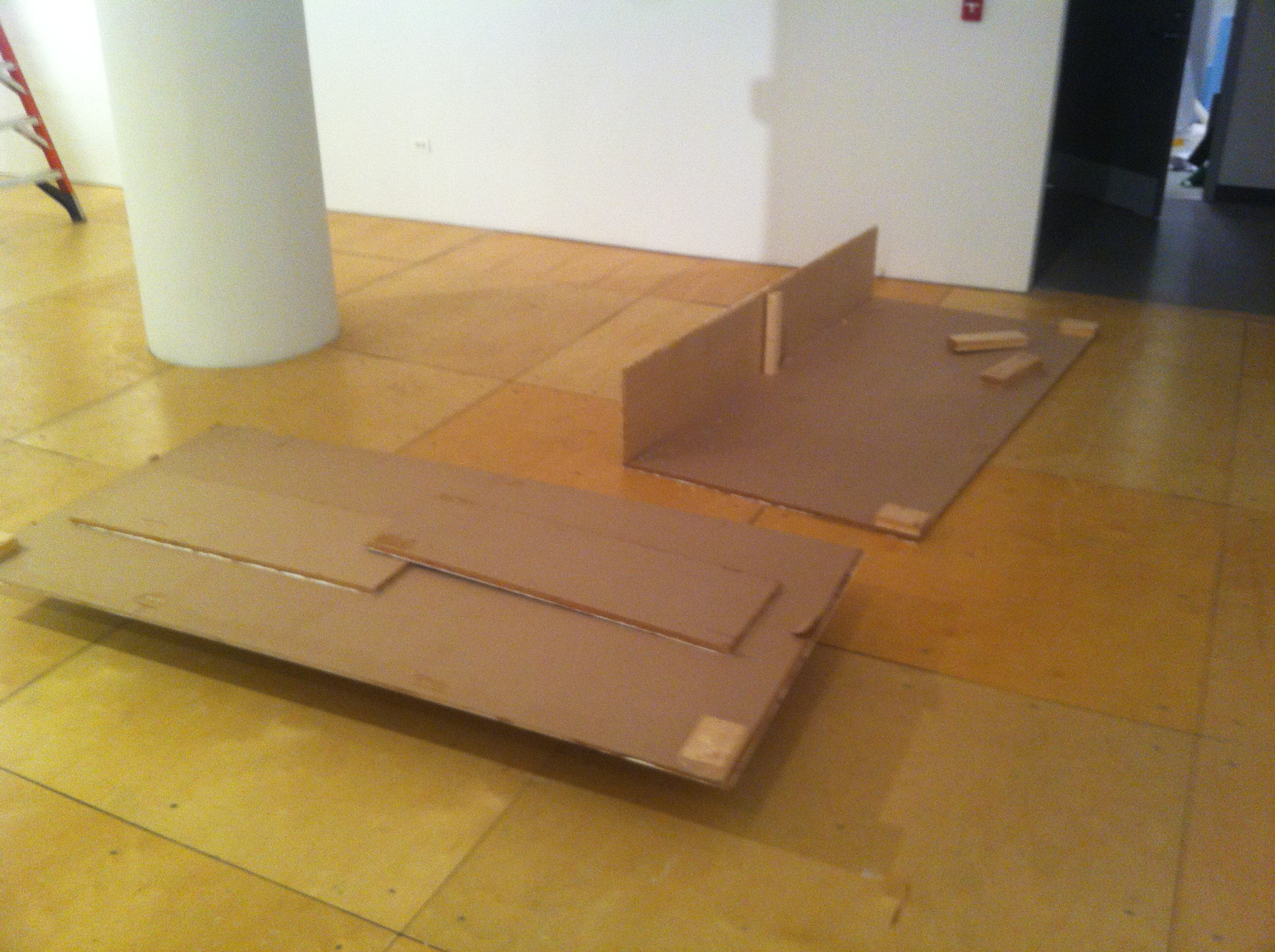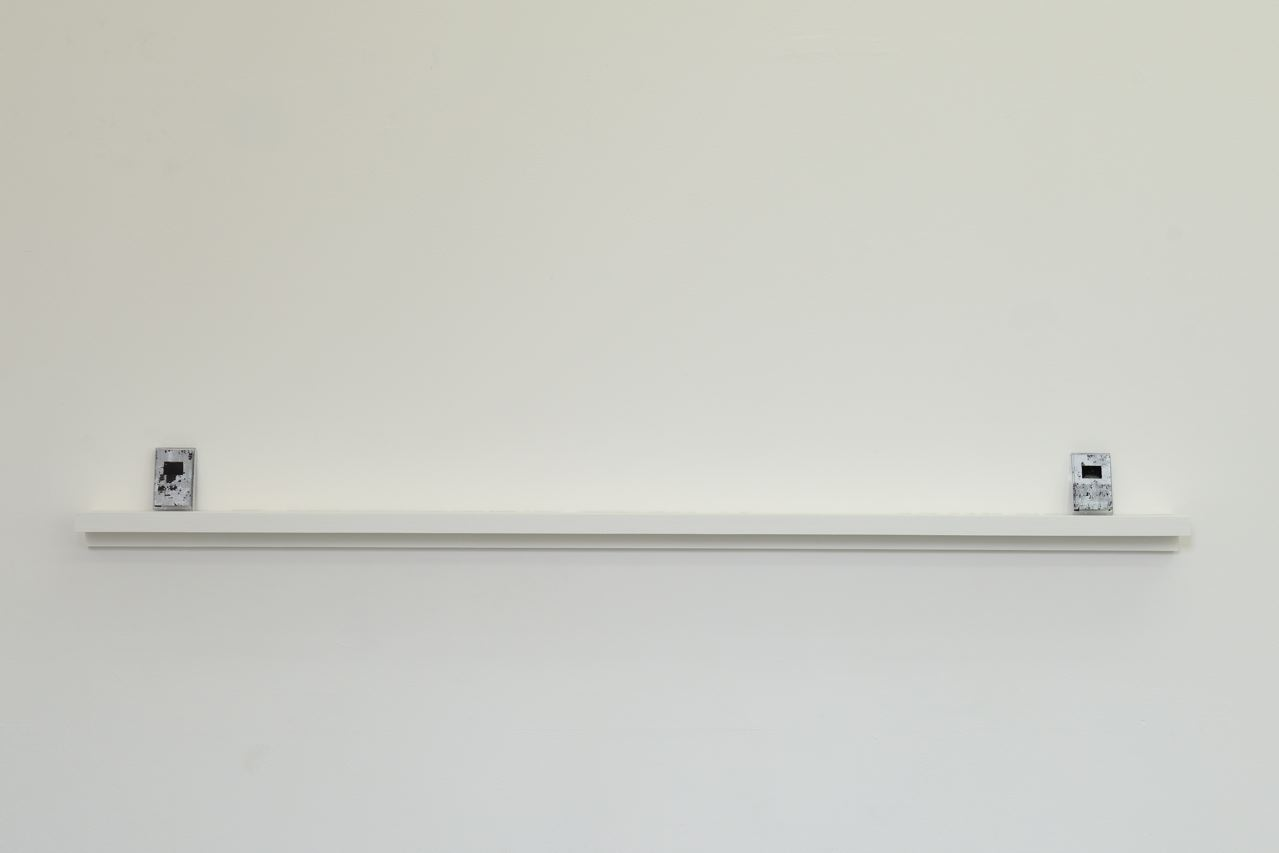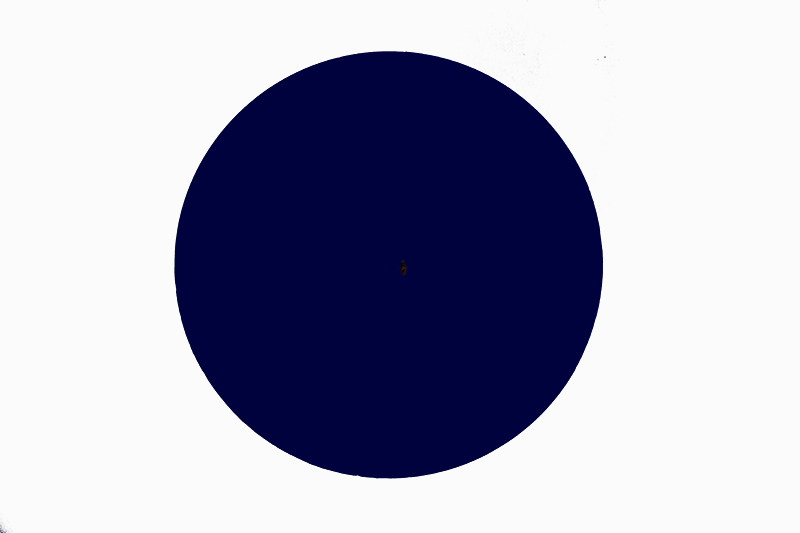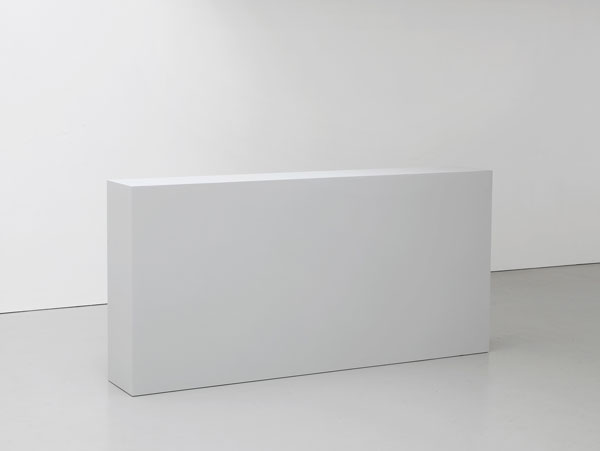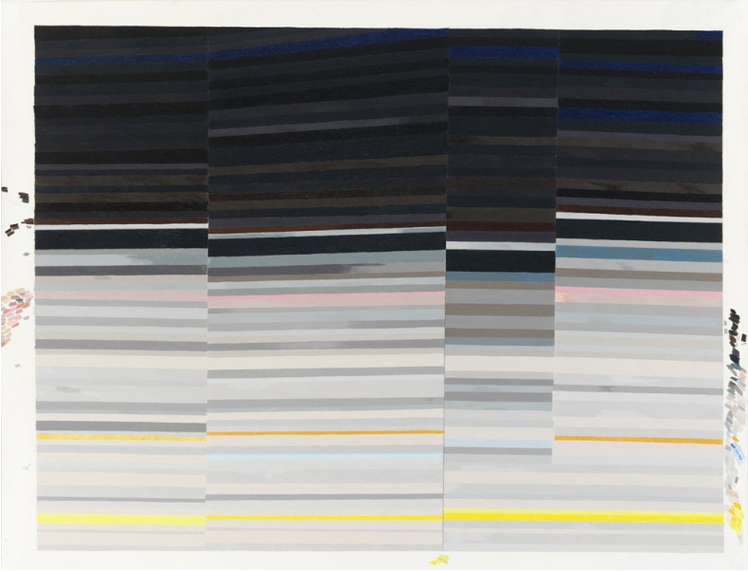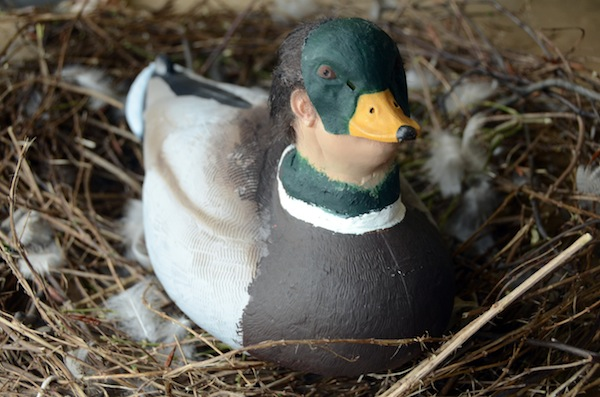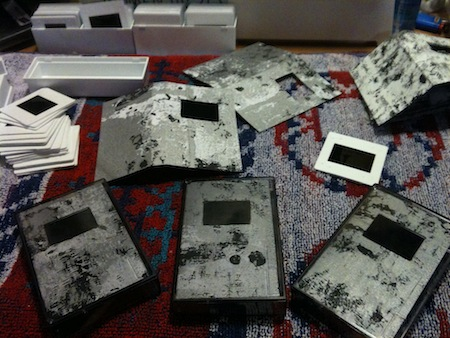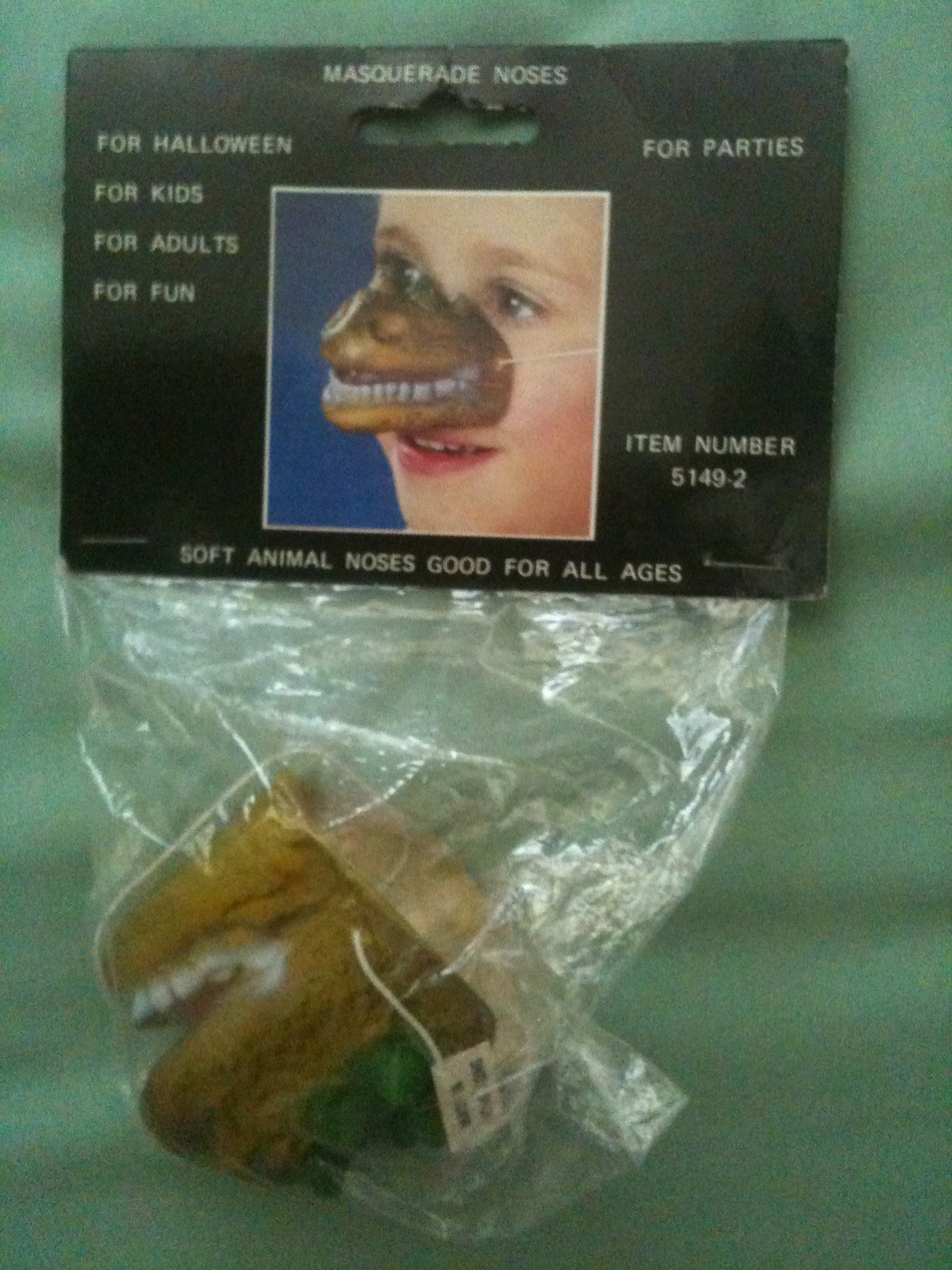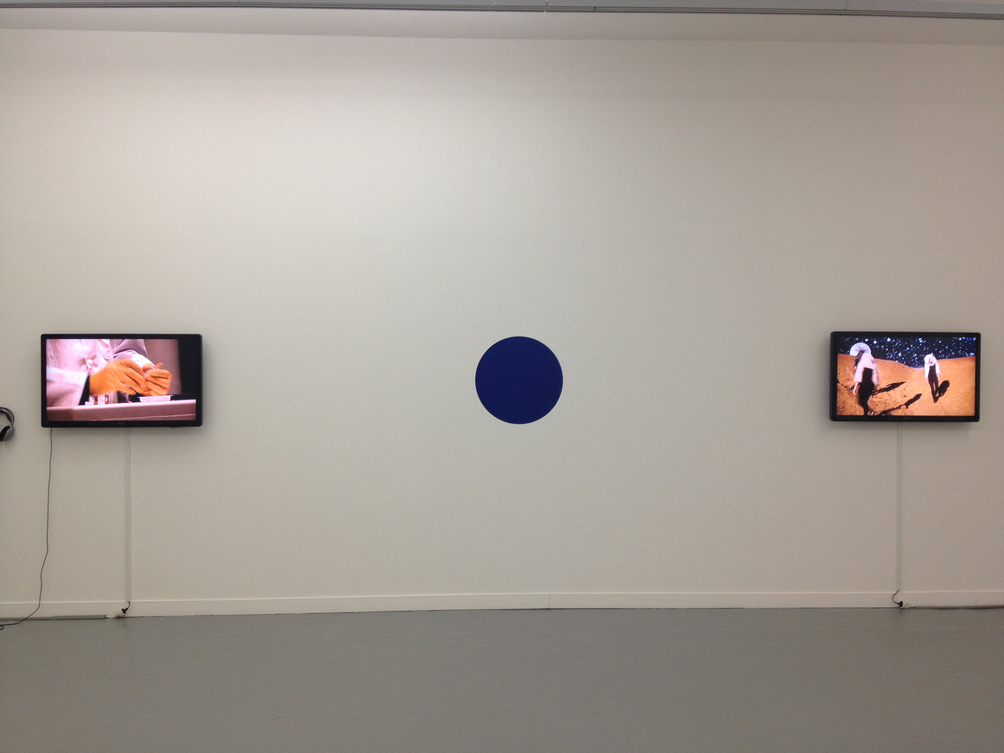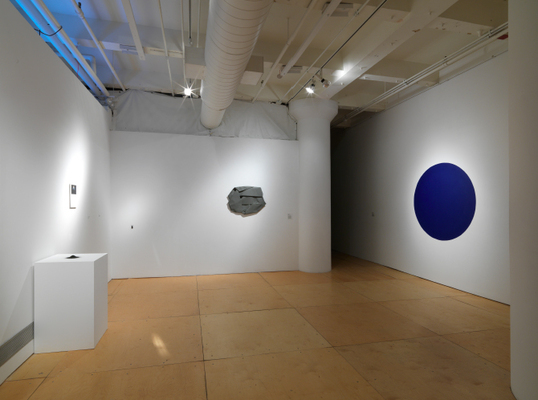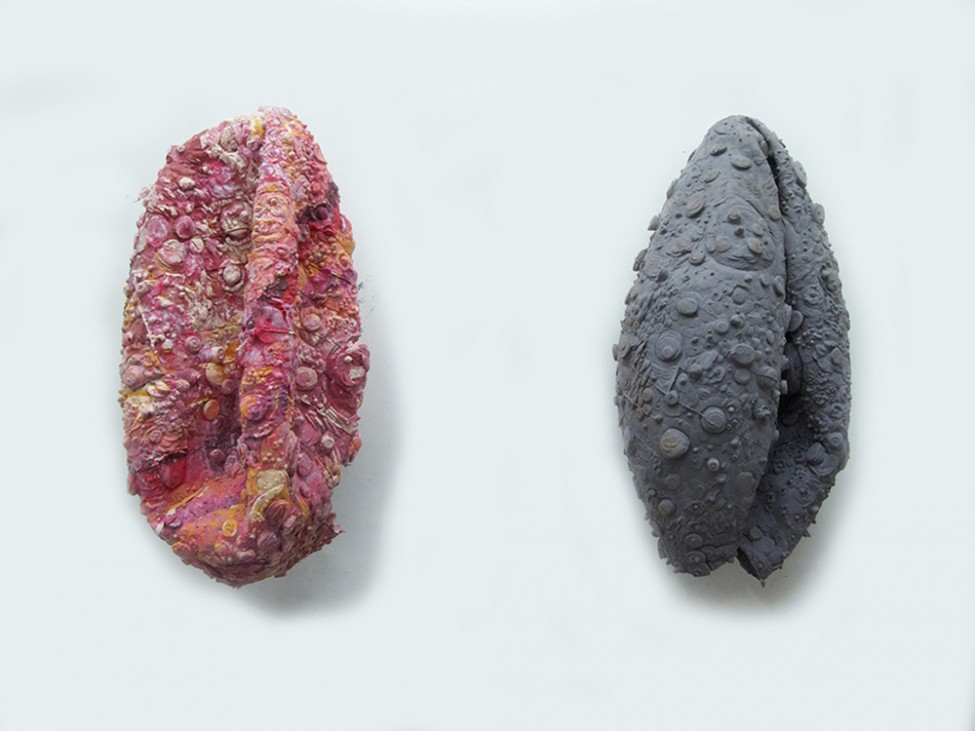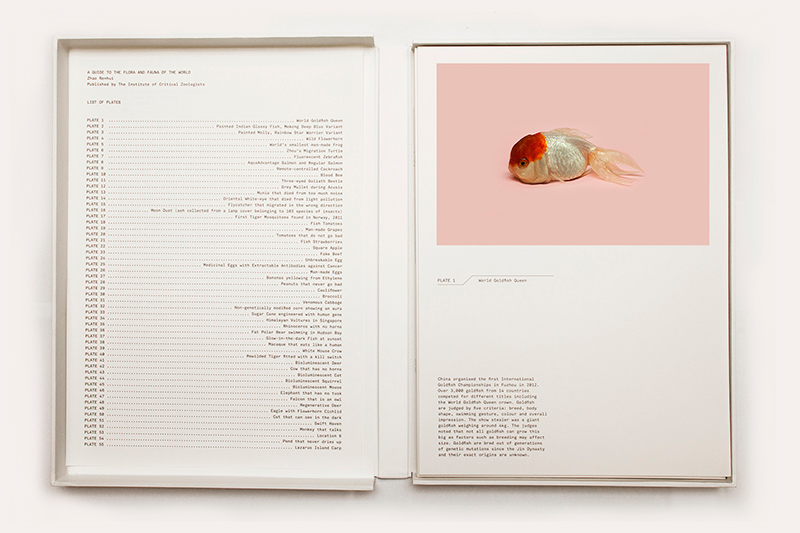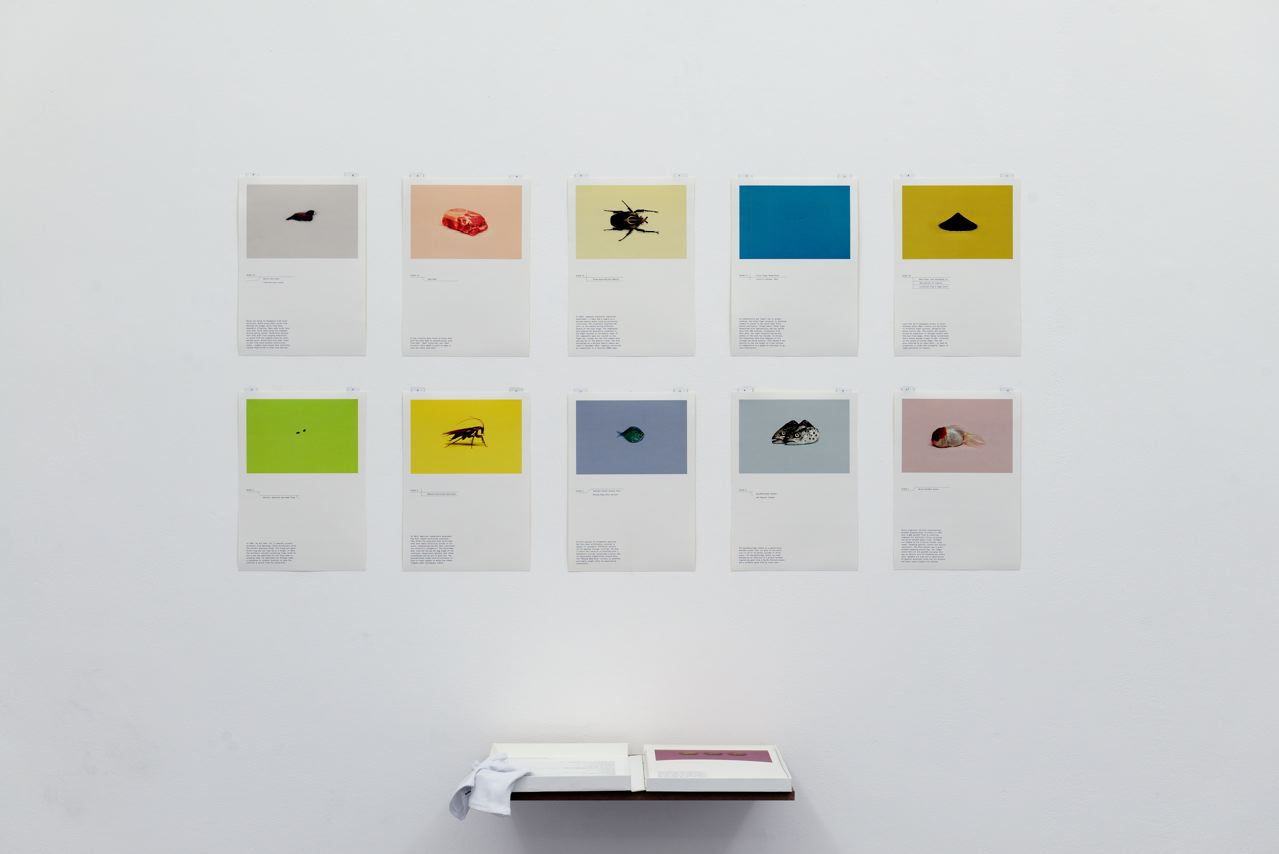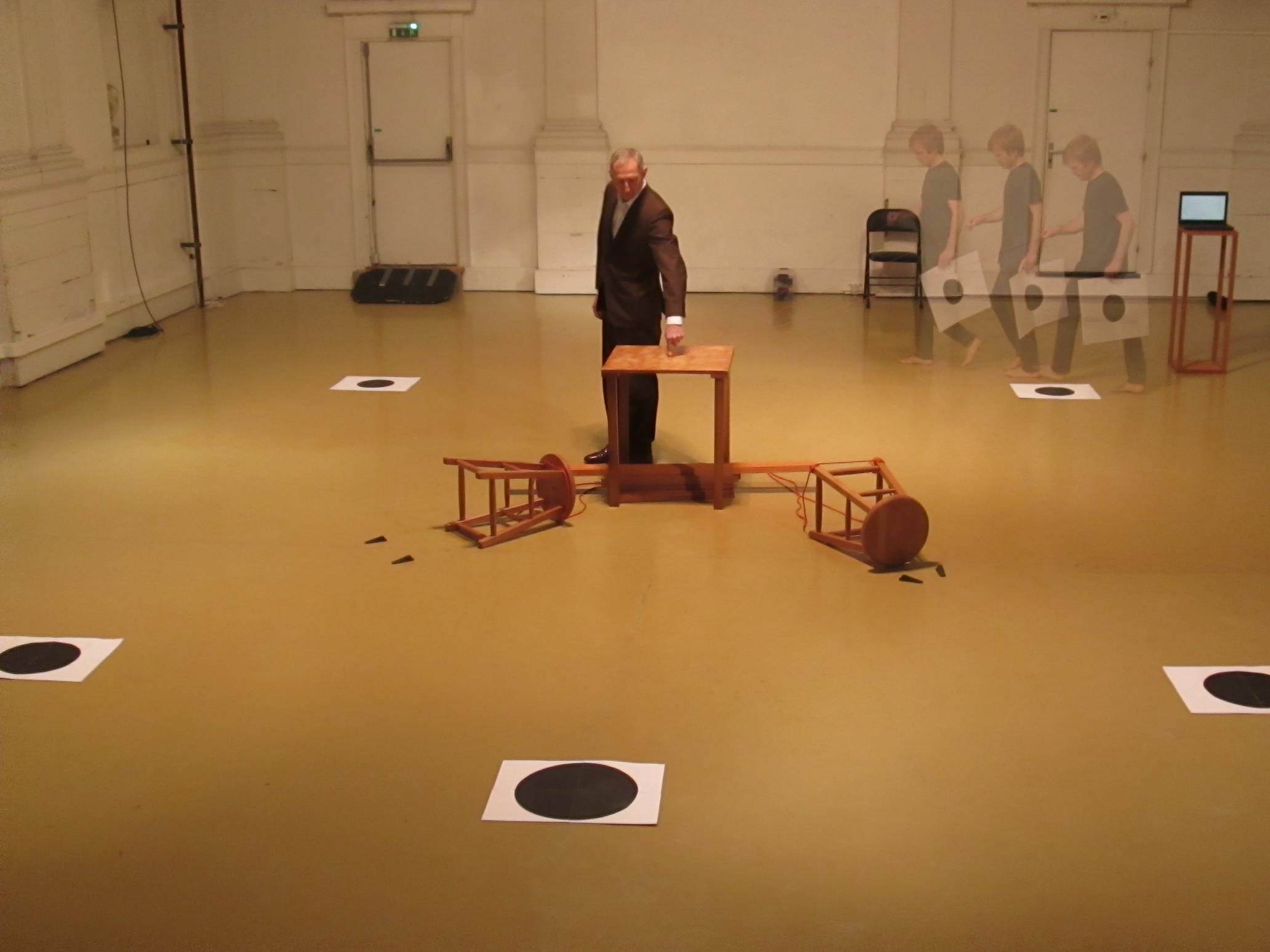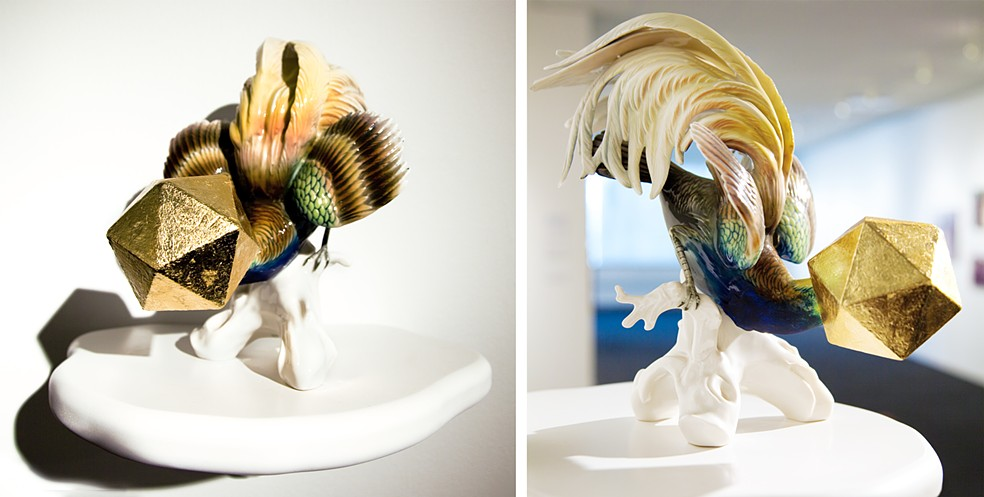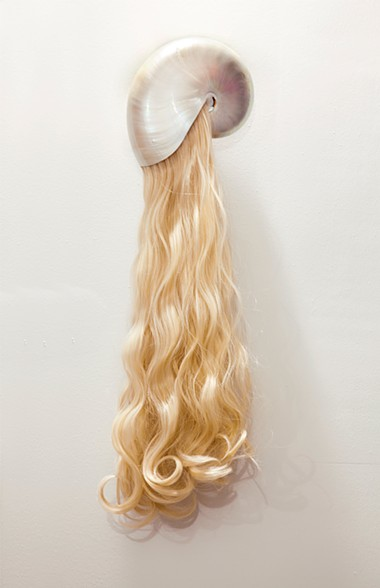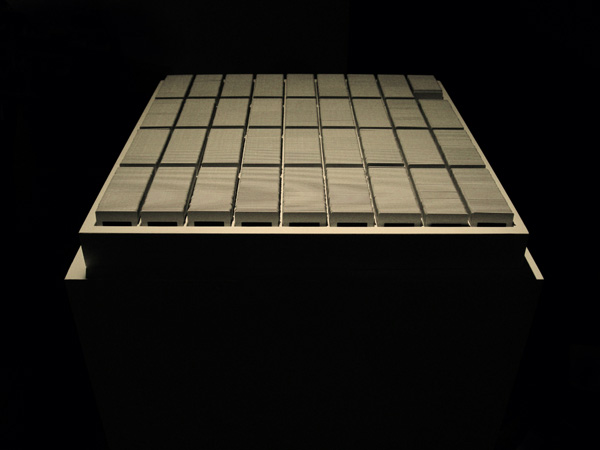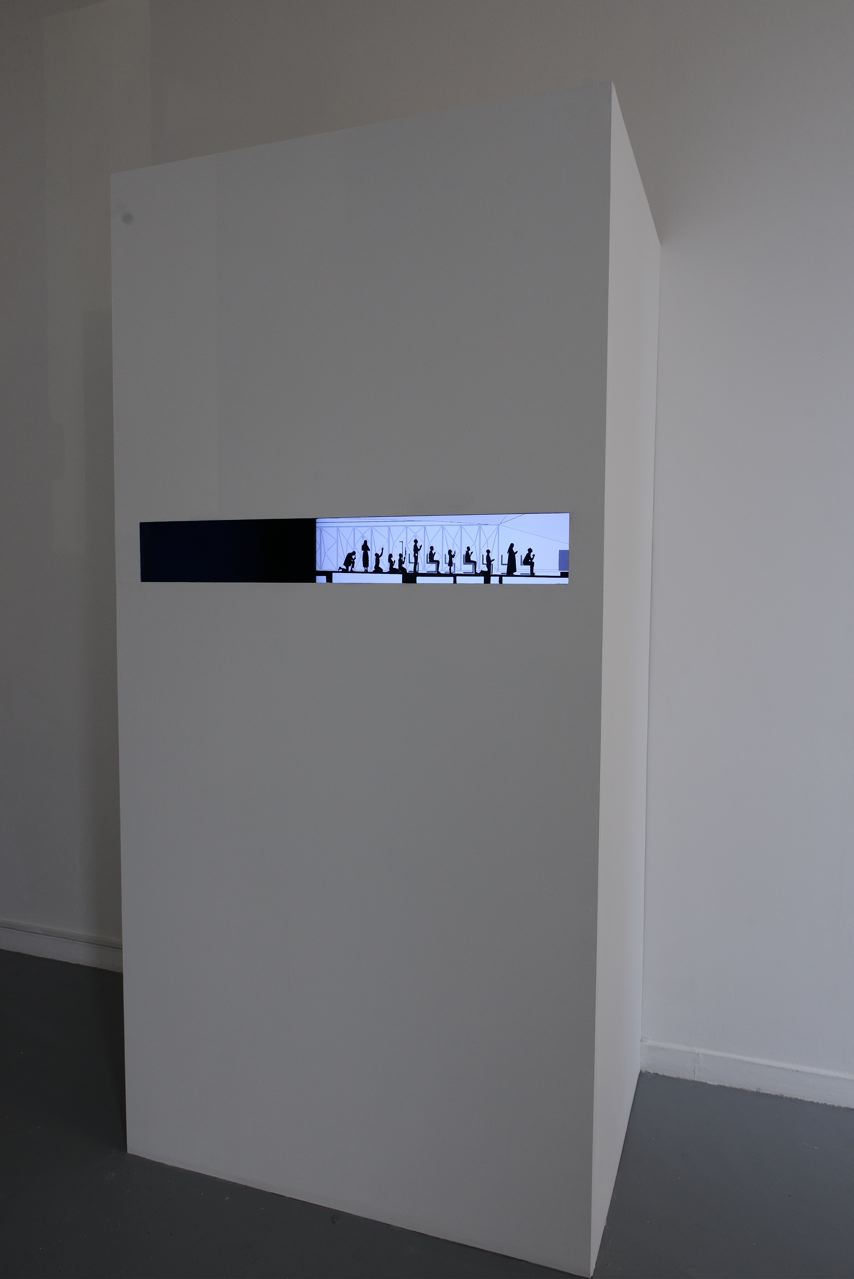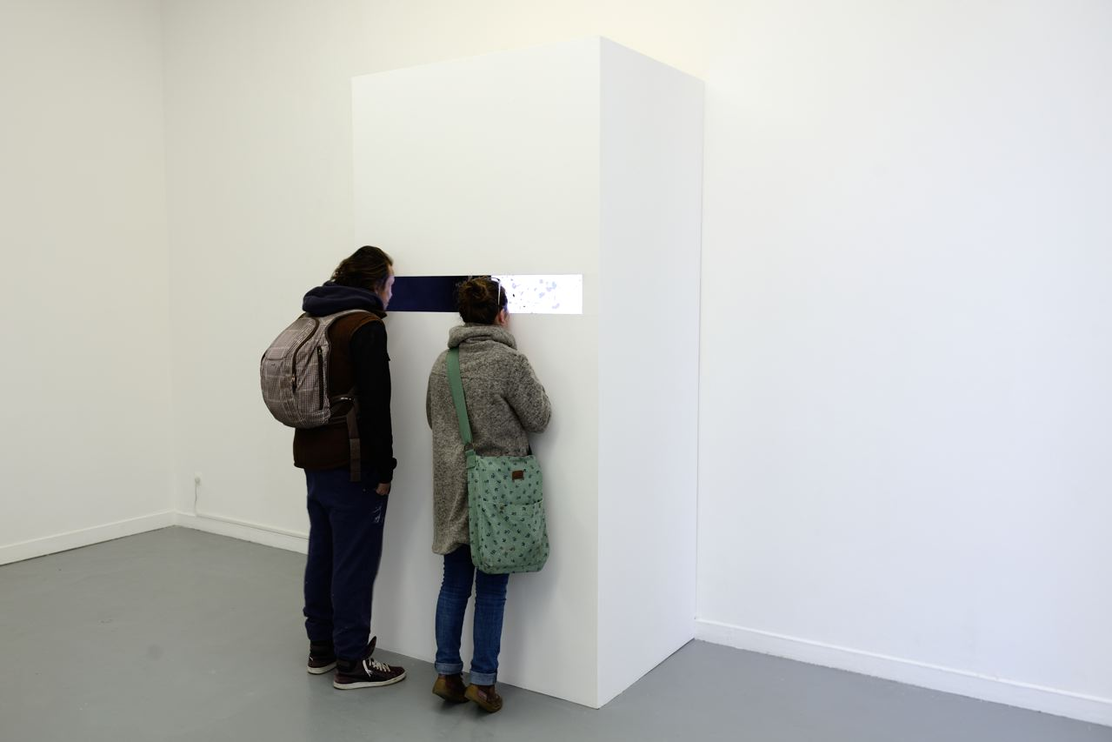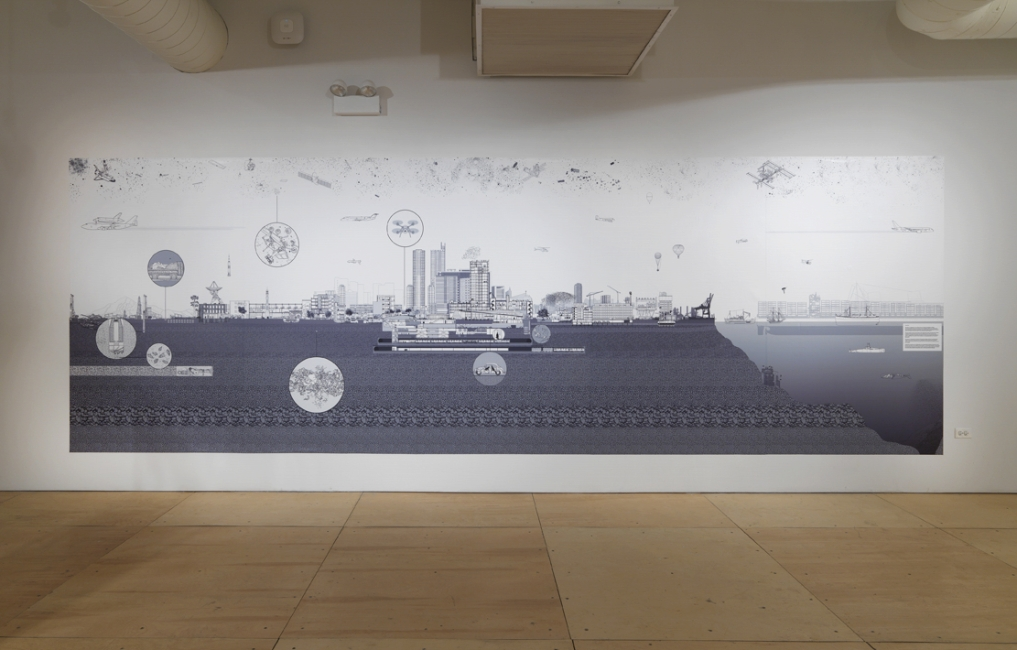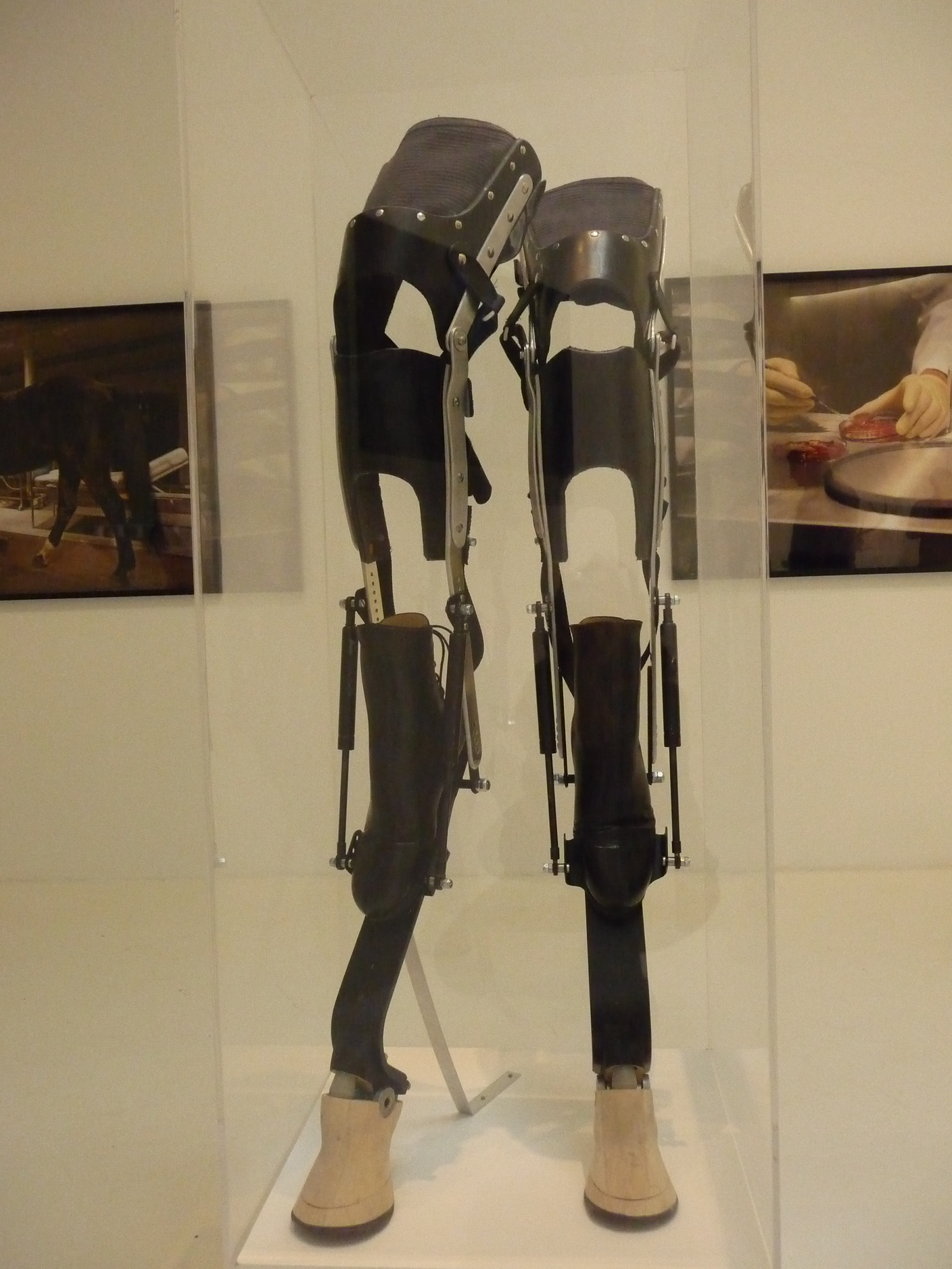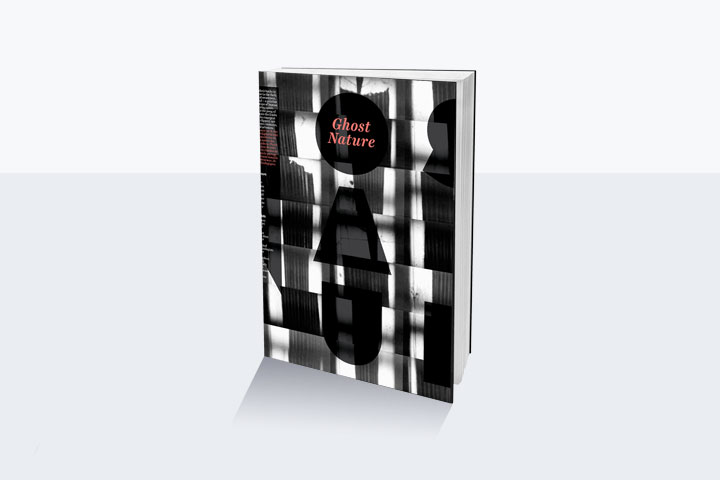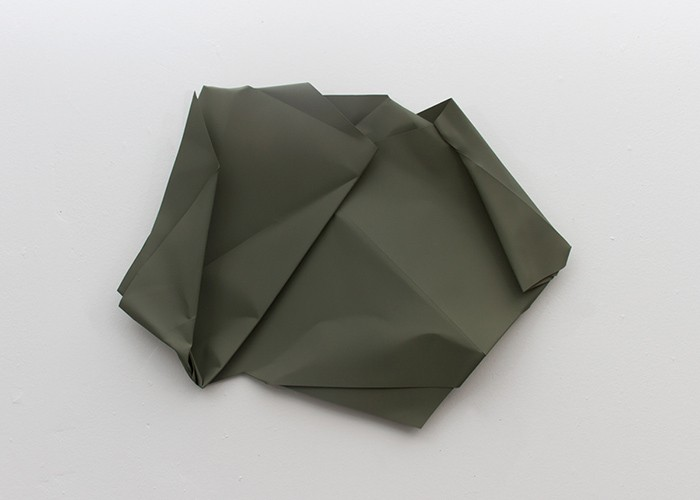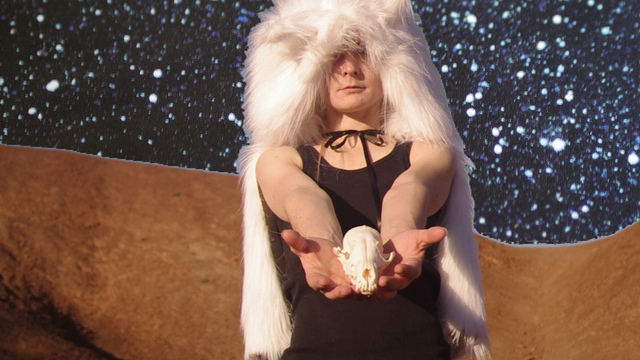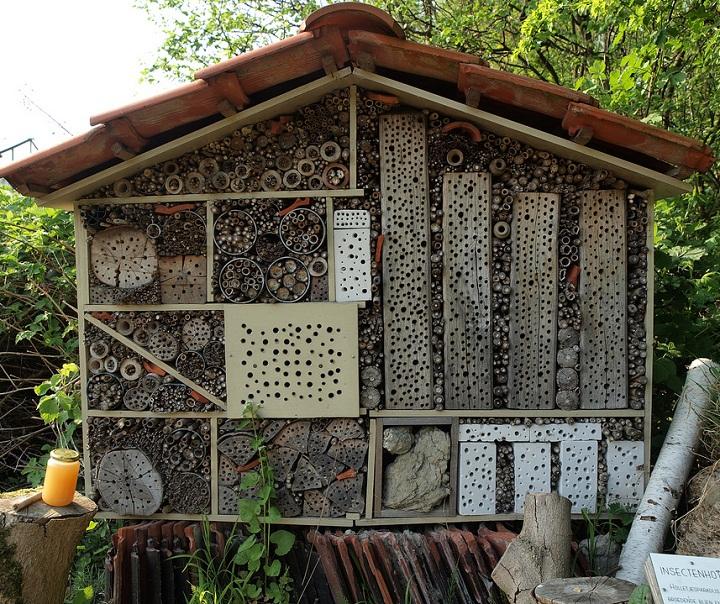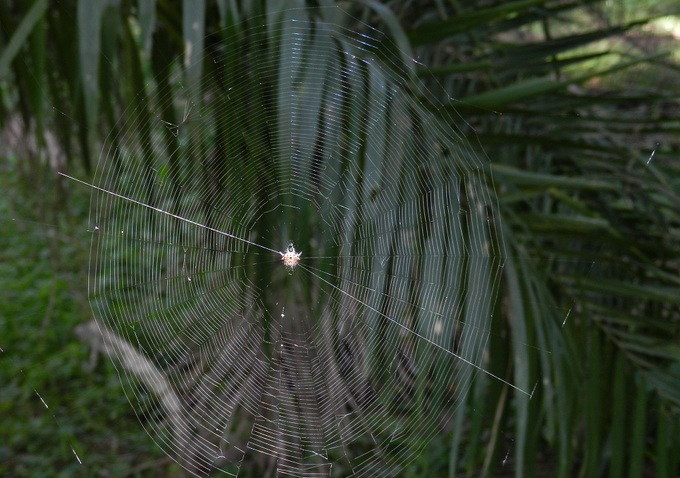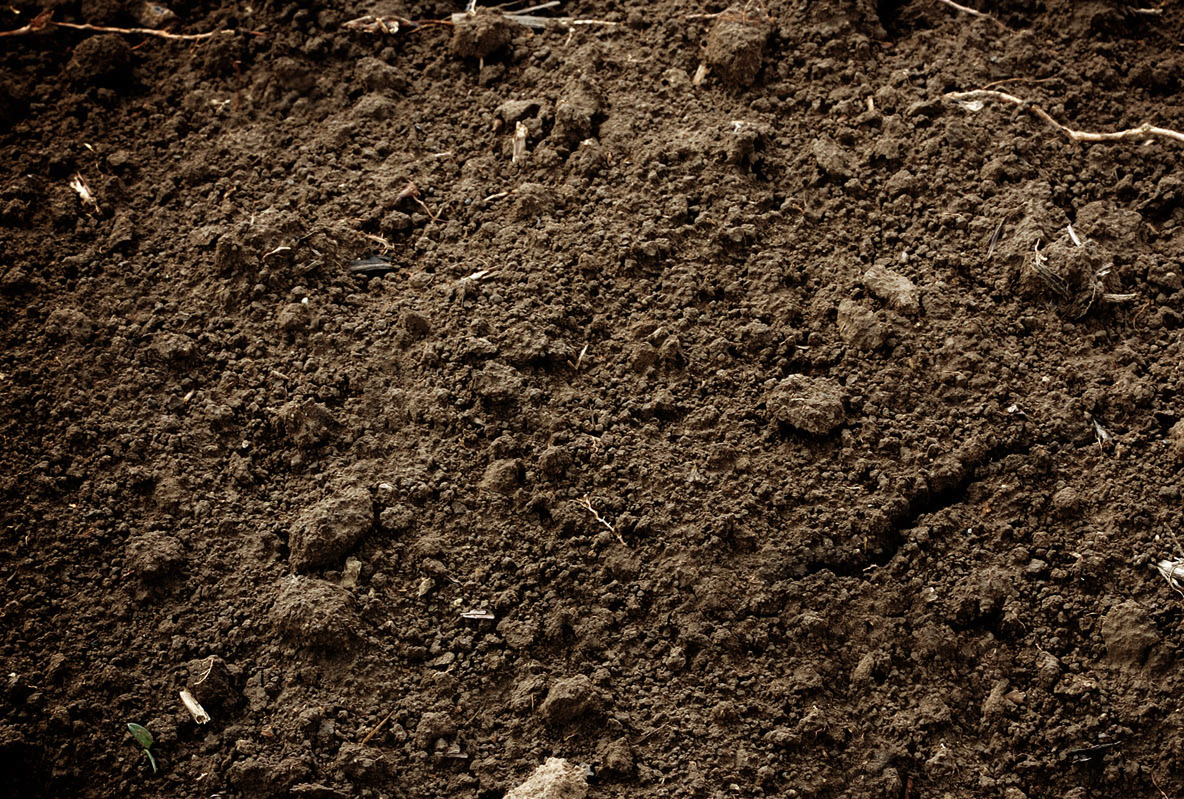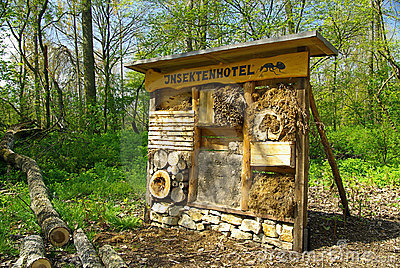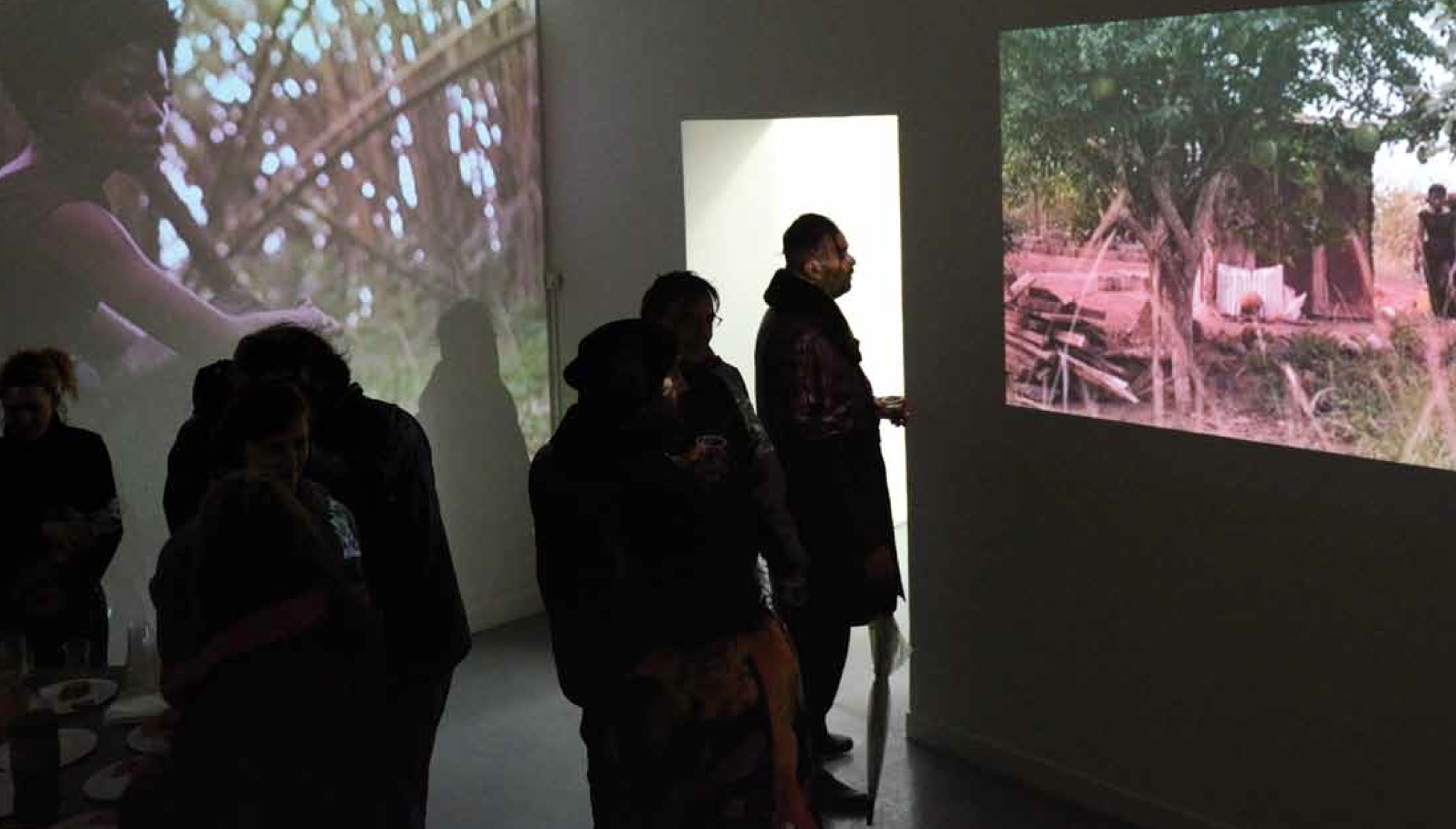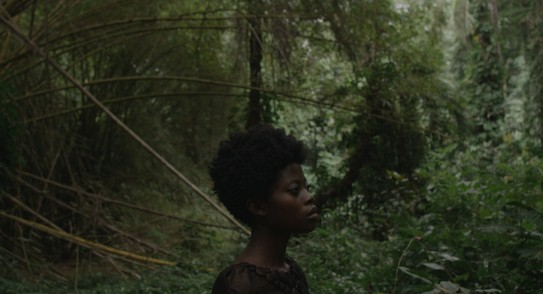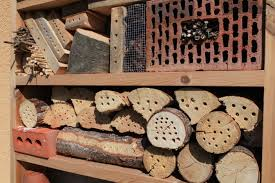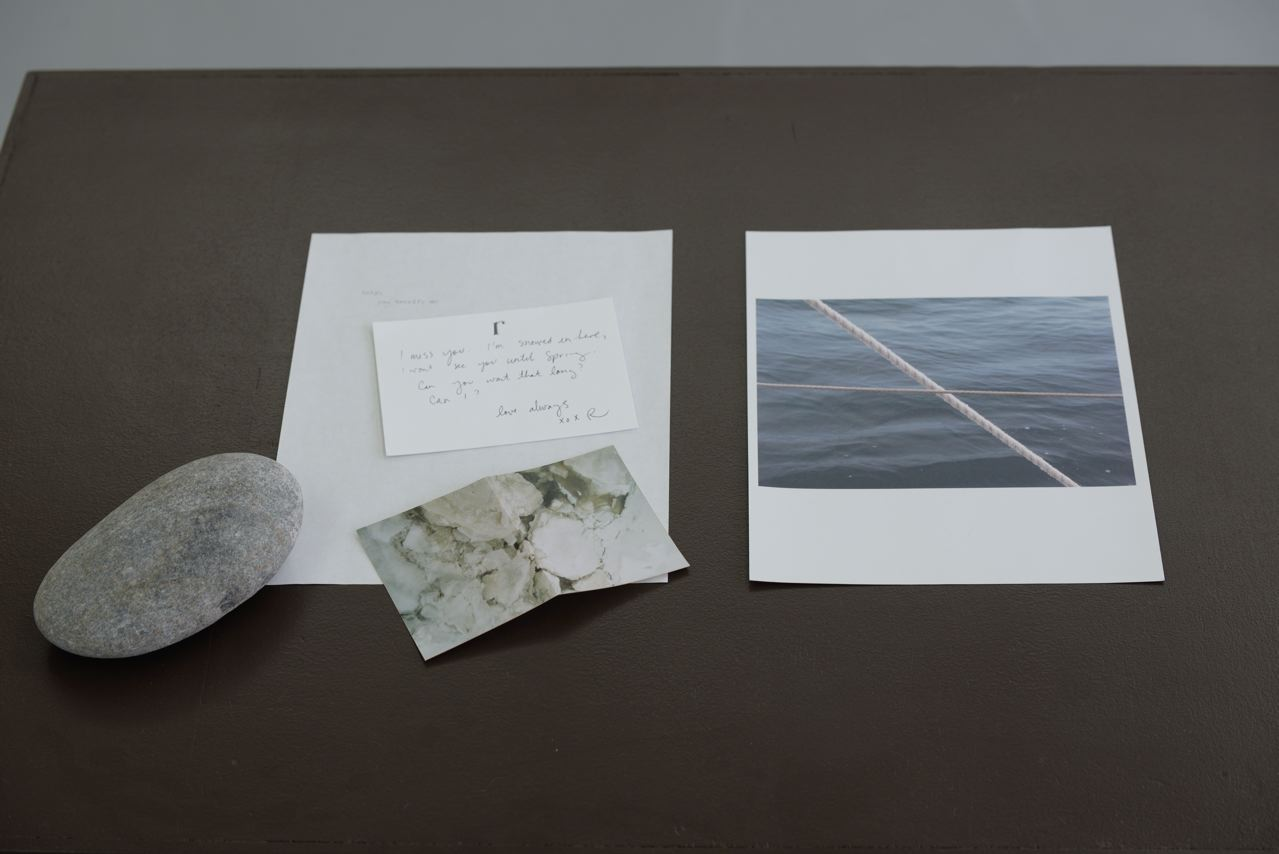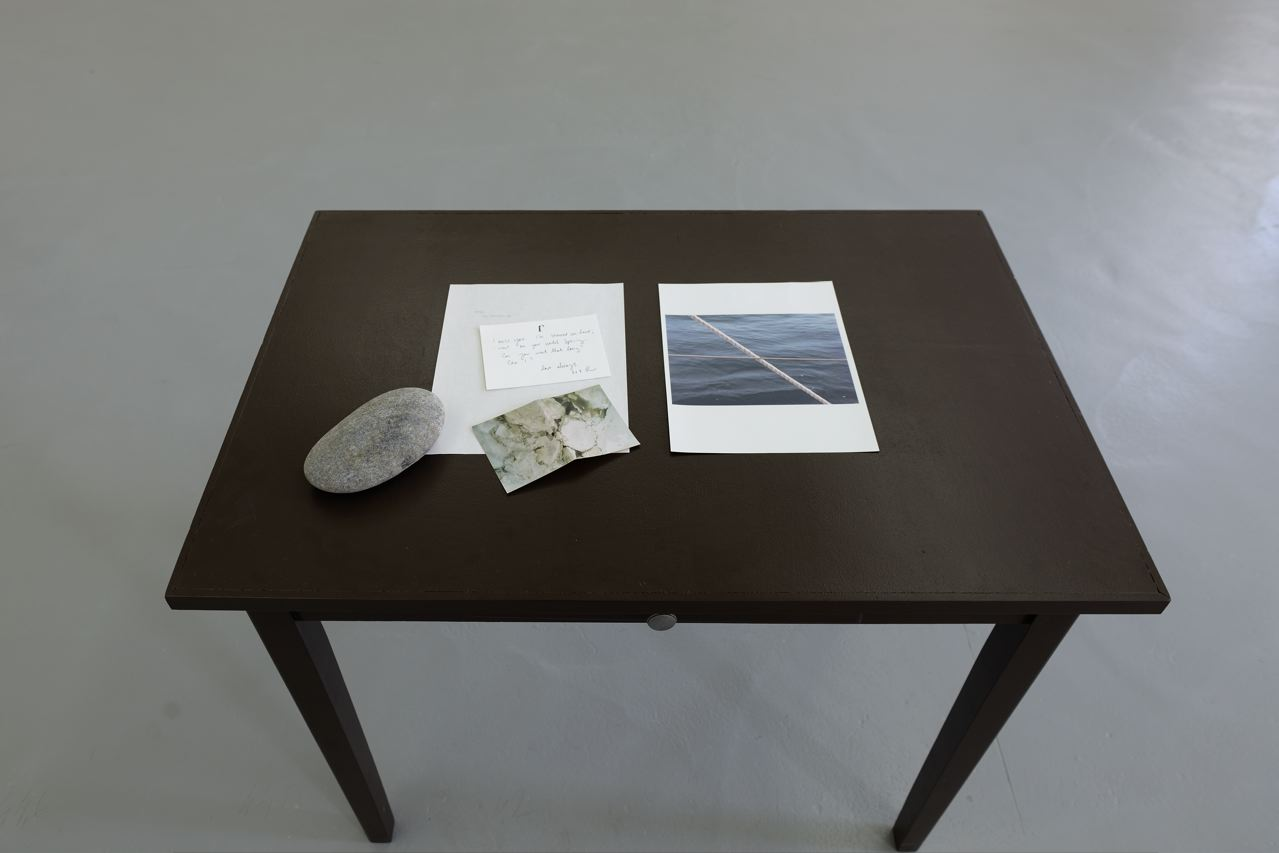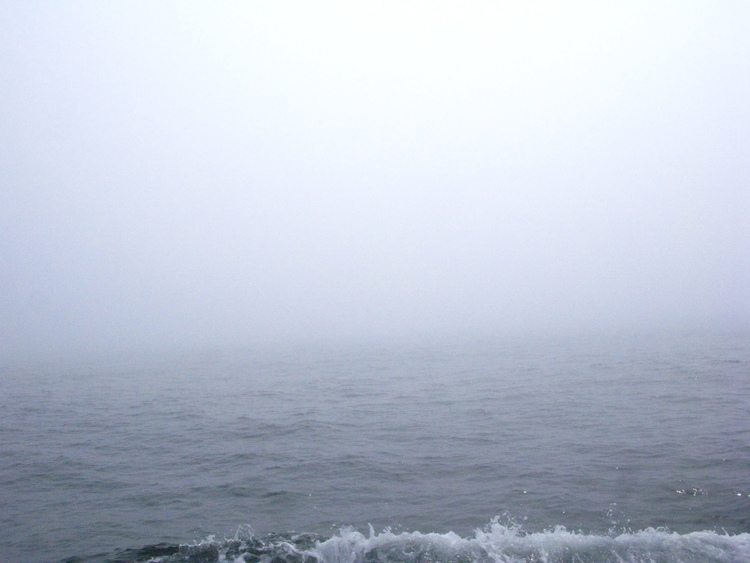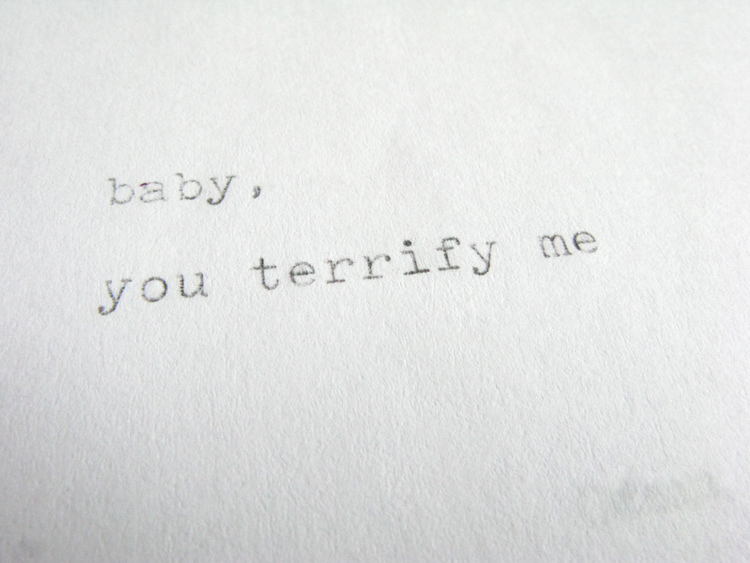‘This is what happened at 3400 feet – we had reached a stand of red wood trees in an area that had never been cut and my ears popped.’ – Lyn Hejinian, My Life and My Life in the Nineties (Middletown, CT: Wesleyan University Press, 2013), p. 89.
‘We interacted with a 75 year-old man, a tourist writer, who was our guide for the week. He writes for a tourist magazine called Picturesque Romania. And he has an interesting discourse from the 80s that proposes certain views on what is beautiful in the country. And this idea of the picturesque came to the forefront – what does it actually mean, picturesque? And how does it connect with patriotism? And what does it actually mean for us to go into the country to look at the landscape or to look at old deserted houses and to think, “Oh, this is so beautiful; this is picturesque.” The word means that something is so beautiful it needs to be painted; we need to encompass it – to possess it in a specific way.’ – Irina Botea, ‘Reenacting a Many Possible Past: An Interview with Irina Botea’, Art21, 7 January 2011 <http://blog.art21.org/2011/01/07/reenacting-a-many-possible-past-an-interview-with-irina-botea/#.UpEPeYUmxgc> [accessed 19 February 2015].
Irina Botea, Picturesque (still from video), 2013. Collaboration with Nicu Ilfoveanu and Toni Cartu, video, 30:00 min. Image courtesy of the artist.
Suddenly it seemed more interesting to approach this question, not by locating shamanic tropes in youth culture, but rather by looking at the ways in which borders and bounds were bleeding into one another in artistic practices.
I wrote an essay for Paper Monument about Coates, AOo, and Milan Metthey – another fellow I found who developed various strategies to make a duck fall in love with him.
I made paintings too – last winter a friend let me install an exhibit in his administrative office at Columbia College.
Ghost Nature, the exhibition, was another conclusion drawn around my thought patterns. An iteration of the exhibition took place concurrently in two locations: at Gallery 400 in Chicago, Illinois and at La Box, in Bourges, France. Now it takes place here, also, on this page by way of a series of research notes. Many but not all of the artists in this digital presentation were featured in the exhibition. Many but not all of these notes were useful.
I’ve always worked this way: in many direction at once. Partly as a curator working on curatorial projects, partly as a publisher, partly as a writer and artist, sometimes through comics too … one aspect of production and research is always informing another. So it’s a bit like this page reflects the energy of my studio.
Ghost Nature, 2014, installation view, Gallery 400, Chicago. Photograph by Tom Vaneckye Left: Heidi Norton, Anaphase Mutated, 2014. Glass, resin, plants, paint, wood, 61 1/2 × 52". Right: Akosua Adoma Owusu, Anancy, 2012. Video and slides, 2:00 min.
Curatorial Note: My research began when I started noticing hipsters wearing Native American tropes: moccasins, dream catcher t-shirts, howling wolf tattoos. Remember the Urban Outfitters Navajo underwear debacle. I started wondering if those fashion statements stemmed from a cultural desire to get beyond irony, even if the initial gesture was nevertheless ironic.
Joseph Beuys came to mind then: specifically Benjamin Buchloh’s Artforum essay ‘Beuys: The Twilight of the Idol’, in which Buchloh describes how Beuys tries to transcend the trauma of fascism by rejecting all forms of authority in favour of a self-made mythology. According to Buchloh, Beuys fails.
I wondered if Beuys’s strategy might provide insight for artistic preferences in contemporary America. Shamanic tropes were appearing in contemporary art. There were more and more books about animism as well …
I rewrote the story of Joseph Beuys and his coyote, imagining it took place in a motel instead of a gallery.
I found Marcus Coates.
I read Timothy Morton’s The Ecological Thought.
I discovered Art Orienté objet – taking particular interest in a project where the artist has a horse blood transfusion.
Heidi Norton, Dead Palm Burnt by the Sun, 2011. Archival Pigment Print, 30 × 35". Image courtesy of the artist.
Above: Field Static: A Group Show About Objects, co-curated by Devin King and Caroline Picard, installation view, Co-Prosperity Sphere, Chicago, 2012. Below: Field Static: A Collection of Essays Dedicated to the Object, exhibition catalogue, Holon Press, 2012.
‘One summer in my studio, I painted a plant white to be included in a still life photograph (the New Age Still Life series). When I returned it had grown out of the paint. The resilience of the plant floored me. How could this living thing, subjected entirely to such a toxic substance (I had hand painted every square inch) and blocked from receiving light, still be alive? And that was it. That was the beginning. At that point I knew that the plant was my material and I would search for ways in which to preserve it. The simplicity of their needs, their strength, their inherent ability to succumb – plants have been wired for centuries to withstand anything nature and time have handed to [them], even ice ages.’ – Heidi Norton, ‘Heidi Norton and Michael Marder’, interview by Monica Westin, BOMB Magazine, 24 March 2014 <http://bombmagazine.org/article/1000078/michael-marder> [accessed 18 February 2015].
Irina Botea’s 2013 video The Picturesque captures Mr. Nelu’s quixotic search for the pastoral in the mountains of Transylvania. The camera casually attempts to unpack Nelu’s criteria, as tourists might, following his descriptive gaze around the landscape. Occasionally the camera zooms in on something he overlooks – for instance the way a set of abandoned tools have been swallowed by growing vines near a spider’s web full of flies. Nelu leads the viewer through the old, abandoned homes of mine workers and fruit pickers, reflecting on the beauty of a past that no longer exists, a past contingent on a once-working industrial mine, whose jobs gave people cause to inhabit the region. Leaning against an abandoned, overgrown church, he cries out, ‘Repent! Repent’, decrying the unabashed plant growth that’s sprung up and overwhelmed everything around them, as though some human cause inspired God to cast its people out. The paintings on the church walls are wasted out in the wilderness, he says while the camera passes over a fluid and languorous hillside in summertime. Godless, that verdant and perhaps accidental beauty thrives with potent abundance. Neru’s longing for a better, picturesque, past embitters his experience of a landscape with a will of its own. It becomes terrifying – all of that green life, verging on the monstrous.
Irina Botea, Picturesque (still from video), 2013. Collaboration with Nicu Ilfoveanu and Toni Cartu, video, 30:00 min. Image courtesy of the artist.
Notions of what is and what is not picturesque dominate cultures around the world. They attach themselves to nationalistic agendas – a pre-existing geology is used to signify current political systems, further branding national identity. Geology will ultimately outlast those human systems.
Whether or not a population can see, the multiplicitous sensuality of the world hurtles onward; in reality most of our world exists outside the parameters of human perceptual intake. Those invisible agents have great influence on human realms. Nuclear waste, for instance, has a potent, albeit invisible power.
In John Wyndham’s 1951 sci-fi classic, The Day of the Triffids, the majority of humankind is blinded by a strange meteor shower. Following this epidemic of sight, triffids – a species of walking, conscious, stinging nettles – begin to take over the world, killing the human population as they do. As one character says, “‘a triffid’s in a damn sight better position to survive than a blind man’” (p. 61). While the book emphasises human society’s reliance on a normative visual experience, it is similarly able to highlight an inborn fear of vegetal life. Once this fictitious species achieves locomotion, once humankind is made vulnerable, the triffid becomes predatory; its most basic plant attributes lend themselves to world domination. Wyndham thereby emphasises the monstrous will-to-power in plant life, conceiving conditions in which that will overwhelms humankind. Typically humanity ignores what exists outside its visual frame, and although this book is based on unusual, catastrophic events, it nevertheless addresses a space beyond sight.
‘Nearly 30 years have passed since the Chernobyl plant exploded and caused an unprecedented nuclear disaster. The effects of that catastrophe, however, are still felt today, [...] According to a new study published in Oecologia, decomposers – organisms such as microbes, fungi and some types of insects that drive the process of decay – have also suffered from the contamination. These creatures are responsible for an essential component of any ecosystem: recycling organic matter back into the soil. Issues with such a basic-level process, the authors of the study think, could have compounding effects for the entire ecosystem.’ – Rachel Nuwer, ‘Forests around Chernobyl Aren’t Decaying Properly,’ 14 March 2014 <http://www.smithsonianmag.com/science-nature/forests-around-chernobyl-arent-decaying-properly-180950075/?no-ist> [accessed 17 February 2015].
We drove through an epic snow storm to see a public dress rehearsal of Philip Glass’s Einstein on the Beach in Ann Arbor, Michigan. Everything about that weekend blew my mind – from the casino we unexpectedly spent Friday night in (the front man of a 90s cover band wore a neck brace), to Glass’s opera. In particular its use of body language – the choreography of smiles, for instance; a strange grimace that appeared again and again on those performers: so wooden and aggressive, stark against the shimmering musical background. I was similarly enthralled with the use of repetition, linking through the act of listening mathematics, music, number, body, history, consequence. The whole production was so well considered – harmony, race, gender, psychology, desire, rage – encapsulated as if in a dream; I think of it now because of the atomic bomb that appears, almost like another character towards which the whole production tended: as if to choreograph the subconscious landscacpe of its origin story.
Caroline Picard, Time Time (Fukushima), 2013. Gouache on paper and cardstock, 8 × 15 × 4".
Heidi Norton, The Radicant, 2011. Wax and mixed media, 18 × 12 × 4". Image courtesy of the artist.
‘Vegetative growth knows neither an inherent end, nor a limit, nor a sense of measure and moderation; in a word, it is monstrous. The life of the plant is a pure proliferation bereft of a sense of closure, a self-replication in another plant (or a part of plant: the difference between the individual unit and a part does not apply here) it will engender.’ – Michael Marder, ‘Plant-Soul: The Elusive Meanings of Vegetative Life’, Environmental Philosophy, 8.1 (2011), 83–99, p. 87.
‘At first blush, plant subjectivity is still more hidden than that of animals and humans. […] So exacerbated, the enigma of subjectivity flips into its opposites: a thoroughgoing objectification of plants, their obviousness and inconspicuousness, not to mention their subsequent unbridled instrumentalization.’ – Michael Marder, ‘Of Plants and Other Secrets’, Societies, 3 (2012), 16–23 (p. 18).
‘Plant ethics would be an ethics of growth, animated by the desire to promote vegetal, cross-species, and cross-kingdoms communities, to let them thrive on their own accord, and to affirm life throbbing in the shared trajectories of plant, animal, and human flourishing. So, it would have [to] be an ethics of the singular (infra-personal) existence and of the universal (supra-personal) conjunction of growing beings.’ – Michael Marder, ‘Heidi Norton and Michael Marder’, interview by Monica Westin, BOMB Magazine, 24 March 2014 <http://bombmagazine.org/article/1000078/michael-marder> [accessed 18 February 2015].
Top and Bottom: Angelika Markul, Bambi à Tchernobyl, 2013. Installation view, Terre de Départ, Palais de Tokyo, 2014. Photograph by Aurélien Mole.
‘Nature is a product behind a glass screen in a shop window. The glass screen is the windshield of your SUV. You drive your SUV through the wilderness to get a couch potato experience of watching Nature as if on TV. […] Nature is a combination of agricultural framing of the world with its rolling hills and horizons and sheep; and of industry, with its processes and automation. Nature is a modern product that is antiqued to look ancient and premodern. But modernity is over – the writing is on the wall, or rather in the thin layer of carbon deposited from 1790 throughout Earth’s crust, beginning what is now called the Anthropocene. We created a geological era that now intersects with human history: think for a moment about how scary that is. Now we know it – so Nature, which just is “stuff over yonder” – is no more, because we now know that “over yonder” doesn’t exist: it has a real name, such as Pacific Ocean or wastewater treatment plant or neonatal tissue. There is no “away” to which to chuck things anymore.’ – Timothy Morton, ‘The Borders of Society: An Interview with Timothy Morton’, Bad at Sports, 11 January 2012 <http://badatsports.com/2012/the-borders-of-society-an-interview-with-timothy-morton/> [accessed 19 February 2015].
‘The actuality of the plutonium can be found neither in the current total state of the world, nor in an isolated lump of enduring transuranian substance. The object known as plutonium is neither material nor relational, which means that it must be both immaterial and substantial, in a sense yet to be determined.’ – Graham Harman, Towards Speculative Realism: Essays and Lectures (Winchester, UK: Zero Books, 2010), p. 104.
‘Object-oriented ontology is not interested in Kant’s specific epistemology per se – one would be hard put to find many genuine Kantians today – but with the form of the Copernican Revolution as it has persisted and undergone variations since the 18th century. For, in effect, the Copernican Revolution will reduce philosophical investigation to the interrogation of a single relation: the human-world gap. And indeed, in the reduction of philosophy to the interrogation of this single relation or gap, not only will there be excessive focus on how humans relate to the world to the detriment of anything else, but this interrogation will be profoundly asymmetrical. For the world or the object related to through the agency of the human will become a mere prop or vehicle for human cognition, language, and intentions without contributing anything of its own. The Copernican spirit will thus consist in an anthropocentric unilateralization of the human-world relation to the detriment of the world. World, objects, will now become simple products of human cognition and philosophy will become a transcendental anthropology that seeks to investigate the manner in which this cognition forms or produces objects.’ – Levi Bryant, ‘Onticology – A Manifesto for Object-Oriented Ontology Part I’, Larval Subjects, 12 January 2010 <http://larvalsubjects.wordpress.com/2010/01/12/object-oriented-ontology-a-manifesto-part-i/> [accessed 18 February 2015].
‘Humans need to interpret the world reductively, as a series of fixed objects, a need reflected in the rhetorical role assigned to the word “material”. As noun or adjective, material denotes some stable or rock-bottom reality, something adamantine.’ – Jane Bennett, Vibrant Matter: A Political Ecology of Things (Durham, NC: Duke University Press, 2010), p. 58.
Devin King and Caroline Picard, Rehearsal of a Grand Opera for One Person, video from installation. Produced at Creative Capital, Chicago, 2012.
Jeremy Bolen, 350 feet above the Large Hadron Collider (matter/anti-matter) #2, 2012. Archival pigment prints, neodymium magnets, 14 1/2 × 18".
‘A phenomenon is a specific intra-action of an “object” and the “measuring agencies”; the object and the measuring agencies emerge from, rather than precede, the intra-action that produces them.’ – Karen Barad, Meeting the Universe Halfway: Quantum Physics and the Entanglement of Matter and Meaning (Durham, NC: Duke University Press, 2007), p. 128.
‘The activity of metabolization, whereby the outside and inside mingle and recombine, renders more plausible the idea of a vital materiality. It reveals the swarm of activity subsisting below and within formed bodies and recalcitrant things, a vitality obscured by our conceptual habit of dividing the world into inorganic matter and organic life.’ – Jane Bennett, Vibrant Matter: A Political Ecology of Things (Durham, NC: Duke University Press, 2010), p. 50.
Robert Burnier, Thirty Six, 2013. Aluminium, polypropylene foam, lacquer, 22 1/2 × 12 × 12".
Before driving across the country in college, various adults – my parents, friends’ parents, and summer employers – encouraged me to see the Grand Canyon. To ‘hit it on the way’ to wherever else I was headed. At the time I was less interested in the sights and more the road itself, or the idea of the road. With parents on one coast, college on the other, and a car of my own I had the means to service whatever beatnik fantasies I had. Friends with similar appetites for the American landscape came too. Junior year we made it to the canyon at last. We’d driven up north from Peach Springs, Arizona. My friend Terry sat in the passenger seat reading an atlas, and noted that if we took a particular road we could hit the south rim of the iconic canyon. There was a visitor centre, he said. Peter, in the back seat with Risky Business sunglasses, seemed excited. Like most late adolescents, we coveted the idea of originality; and discovering an alternative route to that famous gorge of the Colorado River tickled our pride. We would choose the less trodden path – so less trodden, in fact, that the two-lane blacktop became a dirt road. We passed into a national park, and from there into a Native American reservation. The road continued to shrink. I watched the needle of the gas tank slowly drop and remarked on the largeness of the sky. Dust bloomed before the windshield, filtering everything with a soft, cinematic light.
By the time we got to the Grand Canyon the red light on the dashboard was on. I foolishly assumed our eventual destination would afford gas, but it did not. Nor did it boast any miraculous vista. Instead we found a rest area where middle-aged men stretched out beneath the shade of horse trailers, cowboy hats over their eyes. The road ended here, as did the canyon. At this final tip, it was only a crack – nothing like any of the photographs we had grown so accustomed to. When we asked for gas, someone sneered slightly, enjoying our ineptitude. The stranger offered to give us a $150 ride in a helicopter down to the base of the canyon, or a $30 burro to the same end – there, he promised, we’d find a working Supai village where tourists like us could witness a natural way of life. The air was staid and hot. Although those waiting here must have been expecting visitors, they were unmoved by our appearance. I regretted the vulgarity of my t-shirt and felt suddenly childish. When it was clear there was no gas on the other end of the donkey’s back, we politely returned to the car and set off on the same dirt roads by which we’d arrived.
‘Thankfully’, Terry wrote in an email, ‘as canyons grow the earth’s pressure on the surrounding land mass is relieved and that ground rises up (that’s what gives canyons some of their depth), so once we turned your Red Pontiac around, we could coast most of the fifty miles or so back to the nearest gas station.’
‘I want to do a piece where I go to the Alps and talk to a mountain. The mountain will talk of things which are necessary and always true, and I shall talk of things which are sometimes, accidentally true’. – Quotation attributed to Bas Jan Ader.
Ghost Nature, installation view, Gallery 400, Chicago, 2014. Left to right: Marcus Coates, Jeremy Bolen, Sebastian Alvarez, Assaf Evron. Photograph by Tom Vaneckye.
Caroline Picard, Excerpt from Ghost Nature Sketchbook: Map of Bolen’s 4-part photo series, 350 Feet above the Large Hadron Collider #1–4, 2012. Archival pigment prints, neodymium magnets, 14.5 × 18" ea.
Marcus Coates, The Albatross Species, 2012. Twenty-two standard size scaffold, 142 × 32 × 22". Each board length corresponds to the wingspan of one of the twenty-two species of albatross. Image courtesy of artist and Kate MacGerry Gallery.
‘To make the object, [Robert] Burnier cautiously works the once-flat material by way of improvisational folds. Recognizing the originating surface as a kind of pure two-dimensional potential, he interrogates the aluminum, exhausting certain possibilities as a three-dimensional shape emerges and thus becomes its own peculiar landscape. Burnier’s approach is almost collaborative; he is restricted in certain ways by the properties of the metal. As it responds to his interaction, the aluminium surface contributes to its own emergent personality. The process is systematic, yet also there is an element of chance, for certain folds will yield a more successful object than others, just as certain conversations yield more or less insight.’ – Caroline Picard, ‘Inland Delta: A Catalogue Essay for Robert Burnier’ [first published by the Andrew Rafacz Gallery, 2014] <http://www.cocopicard.com/writing/inland-delta-a-catalogue-essay-for-robert-burnier> [accessed 28 February 2015]. Reprinted with emendations.
‘With photography (in the most traditional sense) you have an endless amount of information that is possible to record, but when you create an image you subtract out almost everything, capturing one instant from one perspective. It is an inherently subtractive process. In all my work I hope to create more additive documents. With this project [CERN] I create a tension between the familiar representation, the invisible, and the actual. The literal collision between these elements forms a more comprehensive image of the landscape, strangely making it less abstract while creating a new sense of presence.’ – Jeremy Bolen, ‘The Stage of Scientific Reproduction: An Interview with Jeremy Bolen’, Art21, 26 February 2013 <http://blog.art21.org/2013/02/26/center-field-the-stage-of-scientific-reproduction-an-interview-with-jeremy-bolen/#.UpER6oUmxgc> [accessed 18 February 2015].
Arctic and Antarctic regions seem significant in this context because they exemplify the energy human kind has exerted to seek out, map, and in some sense possess remote regions of the environment.
Outer space has a similar appeal, I think …
‘British performance artist Marcus Coates adopts a tongue-in-cheek attitude toward “the natural world and its evolving relationship to society.” His strategies are typically crude and slapstick; they illustrate the desire to connect to nonhuman modes of being while admitting, perhaps, the ultimate futility of that desire. Coates came to shamanism through a somewhat respectable channel (a neo-New Age weekend class) and conducts mock-solemn rituals in which he claims to communicate with animal spirits. After returning from their world, he delivers messages to his human audiences. “I think firstly I should say that I am deeply skeptical myself, particularly about New Age culture. Usually I kind of expect people to walk out,” he says of his rituals, “and I’m quite open to people calling me a charlatan and laughing. I quite like people not to be so reverential.” But in other performances he somewhat more earnestly seeks out possibilities of kinship with animals, creating mechanical analogues to physical behaviors.
‘In Stoat (1999), for example, Coates constructs a pair of clunky wooden clogs meant to mimic the paws of a stoat. On each sole, two pegs stand three or four inches off the ground – just enough to create a wobbly, stilt effect. The pegs’ orientation in relation to one another, and size, is exactly the same orientation and size as the pads of a stoat’s paw. Perpendicular to the pegs are platforms to which Coates fastens his feet; the mechanism resembles an old-fashioned Japanese wooden sandal. Over the course of this 2’14” video, Coates traverses an unpaved pathway wearing the stilted shoes. With evident effort, he makes tiny sideways steps, periodically losing his balance. When he falls, his ankles twist and the rubber bands binding his purple socks to the makeshift shoes stretch and bow. His feet repeatedly slip onto the rocky dirt, and he has to sit down to reposition them on the stilts before standing up and trying to walk again. The exercise demonstrates an awkward and tedious difficulty, one that connects with the more general predicament of trying to relate to animals on their own terms.
‘Still, Stoat is a video about the learning process. Coates is learning to walk, and, finally, he sustains his balance – the moment is surprising and viscerally impressive. In order to stay upright, he can only move sideways in a particular rhythm. The ping of wooden stilts against rocky ground punctuates every tiny, unsteady step. A real stoat employs this same rhythm as it moves, though it has four legs instead of two. The revelation of the video is that when Coates finally adapts to the constraints of his footwear, he has of necessity adopted the locomotive behavior of the stoat. He embodies a physical kinship to the animal.’ – Caroline Picard, ‘Humanimals’, Paper Monument, 4 (2013).
‘At the silica plant you can see down through the maze of expanded steel mesh staircases and lacy floors into different levels where various processes are happening. It was like climbing through a Piranesi drawing. In the first bath, turbulent water lifts the lightest particles up and over the top lip and the heaviest drop and slide out the bottom. After this preliminary grading into big and small, each of the two categories is dumped on a wide conveyor belt and heated from below; the clumpy sand, hot now, with no visible liquid, drops into a closed bin where it is heated until dry, then conveyed on belts to the sorters. The sorting process uses a patented device specific to this plant which couldn’t be shown to visitors for proprietary reasons.’ – Laurie Palmer, In the Aura of a Hole: Exploring Sites of Material Extraction (London: Black Dog Publishing, 2014). As quoted in the exhibition catalogue Ghost Nature (Chicago: The Green Lantern Press, 2014), p. 115.
‘As a result of the present ecological age and the apparent fall of the wall that used to separate “Nature” from “Culture”, the Arts and Humanities are being forced to reconsider their own ambit of study: how can its disciplines adapt to the rediscovered reality of a flat world in which humans and nonhumans seem to be permanently enmeshed in one another, in which human actions seem to often have nonhuman consequences and vice-versa?’ – João Florêncio, ‘Performing Ecology Pt.1: Introduction’, Bad at Sports, 26 February 2013 <http://badatsports.com/2013/performing-ecology-pt-1-introduction/> [accessed 18 February 2015].
‘There is no “outside” of the system of life forms. Once life “begins” – and thinking this origin is practically impossible – everything else becomes linked with it. This is what most of us mean when we think ecologically: Everything is connected to everything else.’ – Timothy Morton, ‘Thinking Ecology: The Mesh, the Strange Stranger, and the Beautiful Soul,’ Collapse, 6 (2010), 265–93 (p. 272).
Nonhuman, invisible potencies are alarming: whether those potencies exist underground, or inside plants, as vegetables presumed inert while thriving in secret. Potatoes appear to rest, dormant and dead in the gallery space. Yet as time passes they erupt with unpredictable boils and bumps, shrivelling in parts as they bloom in others with inborn, grotesque, anarchic life.
Jeremy Bolen, Plot M#1 (Print from film exposed and buried at plot m above waste from the first nuclear reactor. The film was unearthed by an anonymous force), 2014. Image courtesy of the artist and Andrew Rafacz Gallery.
Stephen Lapthisophon, Taxonomy of Root Vegetables, 2011. Video courtesy of the artist.
CENTURY OLD ANTARCTIC IMAGES DISCOVERED IN CAPTAIN SCOTT’S HUT – Antarctic Heritage Trust (New Zealand).
‘I believe this to be the fundamental dynamic. Transition. The point where one thing becomes another. It is what makes you, the city, the world, what they are. And that is the theme that I'm interested in. The zone where the disparate become the whole. The hybrid zone.’ – China Miéville, Perdido Street Station (London: Macmillan, 2000). E-book.
The landscape returns again and again as a framed presence. It appears through the lens of a camera, or a windshield, hemmed by cardstock, duplicated again and again as an image that disseminates: Niagara Falls, the Grand Canyon, Transylvania, the Sahara, Mount Fuji, the Alps, the rainforest – sites that have as many socio-political associations as they do physical, nonhuman features. Images of these landmarks proliferate such that the simulacrum of the Natural space eclipses its material reality, facilitating a false idea of separation: in fact there is no nature that does not include humanity. Humanity, plastic, artificial intelligence, horses: somehow we are all part of the same integrated system.
Gallery 400 intern, Francesca Banks, takes a look at artwork from the Ghost Nature Exhibit, Gallery 400, 2014. Photograph by Timothy Nguyen. Featuring Xaviera Simmons’s Index One Composition One, 2011. Colour Photograph, 40 × 50", edition of 3.
2011 Avant Music Festival: Georges Aperghis’s Sextuor: L’Origine des Espèces.
Curatorial Note: La Box, the exhibition space in Bourges, wanted to host two exhibitions relating to Ghost Nature. The first would take place in January 2014. The second would take place the following March. To that end, I divided the Gallery 400 exhibition into two parts: Ghost Nature: Projections animalières, and Ghost Nature. The first exhibition featured artists who reflected on animals. The latter exhibit included artists who reflected on other nonhumans: plants, metals, planets. I liked having these two iterations of the same project in France and Chicago, as it complicates the categorical delineation of kinds.
‘BEHOLD yon glorious orb, whose feeble ray
Mocks the proud glare of Summer’s livelier day!
His noon-tide beam shot upward thro’ the sky,
Scarce gilds the vault of Heaven’s blue canopy –
A fainter yet, and yet a fainter light –
And lo! he leaves us now to one long cheerless night!’
– Anonymous, ‘Reflections on Seeing the Sun Set for a Period of Three Months’, The North Georgia Gazette, November 1819.
‘Changes in biology today are tweaking the delineation of kinds. Pharmaceuticals are composed of nonhuman biological material, cloning and stem cell technologies deploy blends of human-nonhuman animal material, and so on; this affects the “sex” of reproduction and fudges lines of lineal descent. Yet it is important to reiterate, for all the significance of today’s biotechnical chimeras, that human-animal mixings have already existed in the realm of discourse. In an unstable realm of animacy, relational exchanges between animals and humans can be coded at the level of ontological mediation, or alchemical transformation, one that goes beyond vitalism that infuses given boundaries with lifelines.’ – Mel Y. Chen, Animacies: Biopolitics, Racial Mattering, and Queer Affect (Durham, NC: Duke University Press, 2012), p. 129.
Stephen Lapthisophon, Duration, 2014. Installation, root vegetables, dirt, furniture, box, and time. Installation view, Ghost Nature, La Box, ENSA, Bourges, 2014. Photograph by Pascal Vanneau.
Every so often I glimpse the opaque white flesh surrounding our cat’s coloured iris, and I am struck by the reptilian character of her eyes. It occurs to me that if she was even twice my size she would not only kill me but enjoy doing so. Suddenly I touch upon the uncharted landscape of her being – that reticent horizon that evades apprehension as a monstrous, chimerical figure emerging in a dream, and – defying translation – is shrugged off and forgotten the instant I wake up. It has no purchase in the linguistic chart of terms I use to filter my experience; as such, it dissolves the minute I encounter the hemmed edges of quantifiable things: the bed, the pillow, the floor, the sink. How indeed am I to incorporate and map her unknown and particular beastlyness in an anthropocentric vocabulary? Or better yet, how am I to remember the vagaries of that knowledge if I cannot hobble its corners with words? If I happen to catch Little Grey studying the shower (a recent habit she’s developed during which she appears lost in thought for hours at a time while staring at the drain), I puzzle over her opaque though evident purpose. Or, when interrupting one of her naps, I touch the bottom of a paw, and petting the soft, strangely distinct pads there, feel her wrap that same paw ever so slightly around my fingers, reminding me of a baby automatically grasping the hand of a doctor. These fleeting moments highlight my own inability to comprehend the subject of her mind. She is not a snake, nor a child, nor is she my predator. She is a cat, something unsettled and unsettling. After she has seemingly spilled water everywhere on purpose and thundered off in a great, seemingly triumphant gallop across the room, I realise perhaps this cat has a sense of humour, in which knocking over glasses is a gag. Could it be? The very nature of that question belies our estrangement, for – if I know her, if we are friends – I should know the answer before ever having asked. I am groping in the dark like one who suspects an intimate friend of stealing. Does my suspicion illustrate some instinctual insight into that friend’s most private soul? Or do I only prove my own blindness, overlooking that companion’s integrity and in so doing, destroying any viable trust between us? Perhaps I am a fool for intimating a cat’s sense of humour. Perhaps not. Beneath our familiar patterns, I am alienated from this dear being. – Caroline Picard, ‘Strangers Among Us’ (Rattapallax: Furniture in Motion Pamphlet Series, forthcoming).
Curatorial Note: Because the exhibitions would happen concurrently in Chicago and Bourges, it was impossible to show the exact same works of art. Instead I chose different works of art by the same artists that were either in the same series or thematically resonant.
‘Just as words provide descriptions – representations of reality – so observations reveal preexisting properties of an observation-independent reality. In the twentieth century both the representational or mimetic status of language and the inconsequentiality of the observational processes have been called into question.’ – Karen Barad, Meeting the Universe Halfway: Quantum Physics and the Entanglement of Matter and Meaning (Durham, NC: Duke University Press, 2007) p. 195.
Xaviera Simmons, Index Four, Composition Two, 2013. Colour photograph, 50 × 40", edition of 3. Image courtesy of artist and David Castillo Gallery.
‘CERN: The European Organization for Nuclear Research – is the largest physics experiment ever built, an endless attempt to recreate and thereby understand the conditions that occurred just after the big bang through analysis of massive amounts of data created by high-speed particle collisions. When the Large Hadron Collider (LHC) is running, 600 million collisions occur every second: 600 million reproductions of what we understand to be the beginning of the universe. Similar to the way in which particle accelerators constantly attempt to recreate and record the moments after the big bang, and create theoretical understanding of the invisible, Jeremy Bolen’s photography attempts (and critically self-undermines his own attempts) to create empirical documents that display the moment of image-creation and the environment that contribute to its conception. Operating in the realm of scientific images, with a strong grounding in American survey photography, Bolen’s work oscillates across the boundary between art practice and scientific research, troubling our belief in “the document”, whether photograph or a laboratory measurement, as a transparent and conclusive representation of a reality that we otherwise cannot access. Bolen creates ambiguously textured, ghostly photographs – often using site specific recording devices such as self-designed, multiple-lensed cameras – of normally hidden presences that make manifest how uncertain any method of visualizing the invisible is, and how dependent the resulting data is on the individual recording methods of different apparatuses. Bolen’s photographs live within the tension between the capturing of ephemeral phenomena and the fictions involved in representing anything at all.’ – Monica Westin, ‘Jeremy Bolen’, Dust Magazine Online, 14 April 2014 <http://dustmagazine.com/blog/?p=16071> [accessed 17 February 2015].
I reprinted a newspaper from 1821 with my publishing house, The Green Lantern Press. Originally written by a fleet of English sailors, the North Georgia Gazette was printed on board two ships in the northernmost part of the earth. They had gone in search of the Northwest Passage – a veritable golden fleece of shipping routes. After bearing through the summer ice with relative ease, it became more and more difficult to move forward: the ice was hardening up ahead just as it was behind them. By November they were icebound. Between November 1819 and March 1820 the crew remained stuck to a crust on the sea. Three of those months were spent in complete darkness. No previous British expedition had wintered in the Arctic. During that time the men took measurements of the earth; they were looking to locate the magnetic North Pole. Under Captain Parry’s command they kept a strict schedule and scrubbed the deck each morning with stones. Once a week they put on plays for one another where members of the crew often dressed in drag. Edward Sabine, a senior scientist, edited twenty-one issues of a newspaper over the course of that winter. The paper was another instrument to pass the time; the periodical was published in 1821, on their return to England.
Most other Arctic expeditions from that time met tragic ends. In the case of Captain Parry’s crew, however, only one sailor passed away, from scurvy. That remarkable success rate is phenomenal given the odds – the seeming endless dark, the constant anxiety that the ice beneath them might, at any moment, crush a ship’s hull, the malnutrition and perpetual cold.
Parry brought a box of costumes with him – dresses and bear skins and capes. With these, the men put on plays for one another on a weekly basis. The Gazette included, among other things, ‘Theatrical Reports’ or reviews of each performance. As a rule, Sabine only published happy news and consequently the text is riddled with inside and sometimes cumbersome jokes, like an archane Onion. There are poems, spoof advertisements (‘WANTED, a middle-aged Woman, not above thirty, of good character, to assist in DRESSING the LADIES at the THEATRE. Her salary will be handsome; and she will be allowed tea and small beer into the bargain’), letters from pennames like A Spectator, Simon Set-Right, Peeping Tom the First, and Meredith Makeshift.
The Green Lantern Press released a limited edition of this publication in 2009. In many ways that book marks the trailhead of my ecological interest. The rest of the excerpted essay, including my curatorial background and publishing interests, can be found here.
Stephen Lapthisophon, Taking Care, 2014. Installation, root vegetables, container, and ice. Installation view, Ghost Nature, Gallery 400, Chicago, 2014. Photograph by Tom Vaneckye.
Pallas Cat Video, YouTube, 2013.
‘It has only to do with a particular way of looking, one that makes us aware of the absolute foreignness of all objects: a special way of looking that is usually associated with the experience of something we call art. But don’t be fooled: more than a specially crafted object waiting to be experienced, art is first and foremost a way of looking (in doubt just ask Marcel Duchamp): looking beyond accidental appearances, beyond givenness in experience; looking beyond the ordinary in search for the world’s hidden surprises while nevertheless knowing that what lies beyond appearances and beyond the ordinary will always remain dark, silent, and inaccessible – unnameable.’ – Joâo Florêncio, ‘Theatrics of Objects’, Field Static (Chicago: The Green Lantern Press, 2012) p. 14.
‘I also have a huge collection of National Geographics and I love to collect images, so I wanted a space to work out some of my reactions to that collection of magazines, and to the idea of collecting in general. Ideas surrounding collecting, artifact, sculpture-as-photograph, and ways to produce a landscape in modern language.’ – Xaviera Simmons, ‘Untitled: An Interview with Xaviera Simmons’, Artslant, 2014 <http://www.artslant.com/ny/artists/rackroom/30747-xaviera-simmons> [accessed 18 February 2015].
‘O, you who listen to me tell this story full of memories and holes, we are that improbable and fragile species heading toward extinction and the extinction of all species, internal causes, external causes, I do not know, we the original species that tells the story of its origins full of holes and gaps, because we have so few documents, an incomplete story of the Earth in an ever-changing dialect, of which we have but the last volume, some fragments of its chapters and some lines of its pages or some letters, and words of uncertain meaning! Immense Nature improbable and unpredictable, contingent nature, where are we going, we who say life was wonderful, we who say life is wonderful?’ – Georges Aperghis, Sextuor: L’Origine des espèces (1992), excerpt from libretto.
‘And whatever wonder I may feel
This whole planet is really no big deal.
A giant rock spinning ’round a ball of fire
Timeless among its billions of twins.
None of them identical, all of them immeasurable
But in the end each without consequence.’
– Every House Has a Door, Testimonium, performance libretto, 2013.
Art Orienté objet, Felinanthropy (installation view), 2007.
Marcus Coates, Self Portrait as a Red Fox, 1999. 35 × 35". Image courtesy of artist and Kate MacGerry Gallery.
Ghost Nature: Projections anmialières, installation View, La Box, ENSA, Bourges, 2014. Photograph by Pascal Vanneau.
Top: The Green Lantern Press, The North Georgia Gazette (reprint of 1821 periodical by Sir William Edward Parry, the crews of the Helca and Griper, Lily Robert-Foley, and John Huston, with artwork by Dan Anhorn, Jason Dunda, Rebecca Mir Grady, and Deb Sokolow), edition of 500 with silk screen covers and 7" record by Nick Butcher. This book was originally published as part of a travelling exhibition, Isolated Fictions, the latest iteration of which took place in autumn 2014 at the Hyde Park Art Center. Right: Rebecca Mir Grady, ‘Timeline of Arctic Exploration’ (detail), The North Georgia Gazette, 2009. Below: Isolated Fictions, installation view, Hyde Park Art Center, 2014.
Assaf Evron, Untitled (swop tr0001.icc), 2013. MDF and epoxy, paste, 20 × 24 × 22".
Marcel Broodthaers, Interview with a Cat. Recorded at the Musée d’art Moderne, Département des Aigles, Düsseldorf, 1970.
‘After that came disorder. A man wearing a stag mask bounded into the clearing and shouted: “Come! Let’s play!” The crowd broke up. Some headed for bed. A majority headed for the woods, to a makeshift stage that had been blocked off with hay bales and covered by an enormous nylon parachute. There they danced, sang, laughed, barked, growled, hooted, mooed, bleated and meowed, forming a kind of atavistic, improvisatory choir. Deep into the night, you could hear them from your tent, shifting every few minutes from sound to sound, animal to animal and mood to mood.’ – Daniel Smith, ‘It’s the End of the World as We Know It … and He Feels Fine,’ New York Times, 17 April 2014 <http://www.nytimes.com/2014/04/20/magazine/its-the-end-of-the-world-as-we-know-it-and-he-feels-fine.html?emc=edit_th_20140420&nl=todaysheadlines&nlid=60936983&_r=1> [accessed 18 February 2015].
Euclid, The Elements, book 1, proposition 1.
Begin with the ideal: the most remote, ideological premise of the natural world. The Euclidean circle that does not exist, perfectly and materially in the world, with bounds equidistant from the central point at any infinitesimal position along its circumference; the circle whose very existence is based on an impossible beginning: the point, which has no part. The very same circle on which so much of our material architecture – our world building – is based. And, amazingly, those same idealistic tools are entirely effective. It is, indeed, possible to build great skyscrapers, highways, and bridges using an idealistic geometrical system. Somehow those forms translate to our own, rugged, material ones.
Humanity wants to identify itself as something distinct from the animal. Part animal and part divine, a species capable of language, capable of conceiving of its own death; we are a species with a deep cultural and historical inheritance. We use tools. Nevertheless, while those attributes might at first appear like signs of our unique capacity, when examined, they fall apart. In every instance there is another creature that shares something of our nature, or a particular skill seeming first like a trailhead that leads back to a perplexed muddle with an animal instinct at its start. As is the case with language, for instance, ‘Up until the eighteenth century, language – which would become man’s identifying characteristic par excellence – jumps across orders and classes, for it is suspected that even birds can talk.’[1] Perhaps because of our inability to answer this peculiar question about human essence, we are heavily invested in proving our superior potential over and over again. Human civilization is a stronghold against the rigmarole of species and animal appetites. Halfway through his book The Open: Man and Animal, Giorgio Agamben cites historical naturalist Jakob von Uexküll. Uexküll rejects a single biological world of progressing life forms that share a common purpose and world. He does not prescribe to the vision that life forms commiserate upon survival in the same way, a way that would lead them to necessarily pit themselves against one another. In his view, humankind is not necessarily at the apex. Rather, Uexküll imagines an infinite variety of realities, or ‘perceptual worlds’. For the most part, those worlds do not communicate; they can be reciprocally exclusive while nevertheless relating to one another at discrete instances. You could imagine that they observe the same time signature while being unaware of one another’s melody. Agamben describes how the fly cannot physically perceive the spider’s web – that each world (Umwelt) of spider and fly, while being inextricably linked, somehow excludes the other. These two perceptual worlds ‘are absolutely uncommunicating, and yet so perfectly in tune that we might say that the original score of the fly, which we can also call its original image or archetype, acts on that of the spider in such a way that the web the spider weaves can be described as “fly-like”. Though the spider can in no way see the Umwelt of the fly […] the web expresses the paradoxical coincidence of this reciprocal blindness.’[2]
[1] Giorgio Agamben, The Open: Man and Animal, trans. by Kevin Attell (Stanford, CA: Stanford University Press, 2002), p. 24.
[2] Ibid., p. 42.
Johannes Hevelius, Moon Map, 1644.
Milan Metthey, Love Ducking Experiment (video still), 2011. Video, 2:53 min.
I met an old man who described how he and four of his closest friends from college met to climb the infamous Mount Everest. While he did describe a hard case of pneumonia that came about afterwards, he did not describe the bodies he’d seen along his way up that epic landscape. Over two hundred corpses litter the mountain’s tremendous history. The prospect of the climb is so taxing in and of itself that bodies often accumulate on the mountainside, becoming landmarks as they slowly – slowly – transform and dissolve into the landscape. Some remain clad in Day-Glo plastic hiking boots, or wrapped in the flags of their originating nation. Others shrink and harden into gruesome mummies. There is something so metaphoric about this – one immediately wants to create a parallel between Everest and life. Pascal even writes, ‘Let us imagine a number of men in chains and all condemned to death, where some are killed each day in the sight of the others, and those who remain see their own fate in that of their fellows and wait their turn, looking at each other sorrowfully and without hope. It is an image of the condition of men’ (Pensées, 199). In a passage from birth to death, we endure the knowledge of mortality. In so doing, however, if we adhere to the metaphor that Everest represents the human condition, we pass over a series of deep-seated assumptions about identity, history, anthropocentricism, and myth. Might we instead observe the predominant sex of these corpses, or the Western skew of its historical timeline, as determined by those industrious foreigners wishing to reach its peak and effectively overcome a landscape, precisely because of its historic difficulty? And could we examine the economy that has sprung up around this trek, one on which Nepal heartily relies: any given traveller has paid $40,000–100,000 just to access the mountain.[1] Tourism affiliated with Everest expeditions makes up 3 per cent of Nepal’s gross domestic product.[2] Or perhaps we could factor in the body’s need for auxiliary oxygen tanks, and technical gear without which it would fail. Consider the litter that climbers leave behind, and the impact climate change has had on the integrity of Everest’s paths. Suddenly the corpses scattered across the hiker’s route become less like an existential debris, and instead concretely indicative of a systemic, global, and mythological convergence.
This is the beginning of my next curatorial endeavour.
[1] Mark Jenkins, ‘Six Expeditions Cancel Plans to Climb Everest This Year: Sherpas, Western Guides, and Nepali Officials Debate Future of 2014 Season’, National Geographic, 23 April 2014 <http://news.nationalgeographic.com/news/2014/04/140423-everest-avalanche-sherpas-killed-update-nepal-climbing-expedition/> [accessed 17 February 2015].
[2] Rob Lovitt, ‘Everest Avalanche’s Impact Will Roll through Nepal’s Economy’, NBC News, 23 April 2014 <http://www.nbcnews.com/business/travel/everest-avalanches-impact-will-roll-through-nepals-economy-n87131> [accessed 17 February 2015].
‘Although smooth to the touch, Assaf Evron’s Untitled (sRGB 1996) presents itself like an organic object. Its form appears intentional, as an unfamiliar species might. Contrary to first impressions, it was produced using technological algorithms. The wooden and epoxy sculpture represents the limits of a particular computer’s ability to produce color. Ideally, a computer would present a perfect sphere of color – white in the center, pure black at the sphere’s edge, with each color in the spectrum radiating out, like a three dimensional version of the same color wheel so many of us are accustomed to in Photoshop. That idealized sphere is impossible to achieve at this time. Computers require strength to create color, and thus far no system has been strong enough to fulfill its ideal spectrum. Consequently different computers have different ‘color models’ – three dimensional algorithmic diagrams that demonstrate the various spectrums different computer systems can accomplish. The first model from 1996 is the smallest, strangest shape. It sits on the gallery floor like an organic beetle – and though no longer useful to the sculpture, the originating computer’s limit becomes a dominant material characteristic of the sculpture.’ – Caroline Picard, ‘Ghost Nature: Curatorial Essay’, Ghost Nature (Chicago: The Green Lantern Press, 2014), pp. 63–111 (pp. 97–98).
Milan Metthey goes so far as to try and embody the animal form in an attempt to communicate with them – toying directly with ideas of desire. He actively courts a farm duck, wearing a handmade duck costume. Both the costume and the mood of doomed yet sanguine hope evoke a Wes Anderson movie. Metthey projects a live feed of himself imitating mating habits to a female duck in another room. Although he is projected in proportion to the duck by way of a live feed, Metthey cannot capture her interest. Her ambivalence persists even though he shares a meal with her, and accustoms her to another Metthey-like decoy. Instead of using the animal form to enact Aesopian tales for human benefit, this animal embodiment illustrates Metthey’s attempts to connect with and conceive of an animal mind. By way of courtship he shows himself to be an inadequate partner in duck terms, and as a result compares himself to a duck’s critical measure. Inherently fraught and prone to failure, these efforts not only test deep-seated assumptions about what is, and what is not, natural, but also emphasise the relativity of human/nonhuman critical judgement.
A woman called a radio show to ask if photographs of outer space were indicative of what she would see after she died. The replying scientist was careful to admit he had no idea what anyone would see after death, adding thereafter that if such thing as a soul existed, and if the soul had eyes like those of a living human, then outer space would – by and large – be simply dark. Overriding the limited reality of our own visual capacity, humans have developed an aesthetic tradition around astral photographs: to highlight aspects invisible to human experience, while highlighting the drama of a single planetary body floating in an ever-expanding black sea. These photographs impose human time on those bodies, establishing an experience the imagination can immerse itself within – not unlike the virtual experiences available in digital environments.
Platonic Spirit: Grey Running Wolf: Rather than ship the original Platonic Spirit back and forth from the UK and the US, it was cheaper to fabricate a replica of the sculpture for the Chicago exhibition. After the exhibition at Gallery 400 the sculpture was destroyed. This image was sent to Coates and his gallery as proof. I wondered if the sculpture has a new presence in this photograph, now that it is broken.
Devin King, The Moon, s/t, 2010. Cassette tape boxes, ink, cardstock, slide film, LED, batteries, 4 1/4 × 2 3/4 × 3/4".
‘In my opinion, my essence was not changed after Que le cheval vie en moi!, but I was able to respond to an eternal frustration: I could finally feel Animal Otherness in me, outside of a purely anthropocentric point of view.’ – Marion Leval-Jeantet, ‘Adapting the Umwelt’, Bad at Sports, 17 March 2014 <http://badatsports.com/2014/adapting-the-umwelt-art-oriente-objet/> [accessed 18 February 2015].
Institute of Critical Zoologists, Bee Trap, 2013. House paint, 8 × 8".
When the gallery director saw Milan Metthey’s video, he raised his hands above his head and cried, ‘Now this is the work of a free man!’
Marcus Coates, Platonic Spirit: Grey Running Wolf, 2012. MDF, paint, 80 1/3 × 38 1/2 × 13". Courtesy of the artist and Kate MacGarry Gallery.
‘But the biggest question of all for other species is what happens to land use. With habitat loss the principal threat to biodiversity, and agriculture taking up two-fifths of land compared with 3% for urban areas, the demand for food, and how it is met, will determine how much land is left for other creatures.’ – ‘Averting the Sixth Extinction’, The Economist, 14 September 2013 <http://www.economist.com/news/special-report/21585095-growth-good-governments-need-continue-regulate-it-and-greens-learn> [accessed 18 February 2015].
Carrie Gundersdorf, Four Sections of Saturn’s Rings, 2013. Coloured pencil and watercolour/paper, 46 × 60".
At some point, Marcus Coates’s two works The Albatross Species and Platonic Spirit: Grey Running Wolf changed for me. Initially I thought they were sculptures intended to highlight the ways in which humans project life onto inanimate objects. Now I wonder if these objects might be somehow capable of pretending to be, or relating to, wolves and albatrosses …
Milan Metthey, Love Ducking Experiment, 2011.
Devin King, The Moon on the Knock, 2010. Cassette tape box, ink, cardstock, slide film, led battery, 1/4 × 2 2 3/4 × 3/4". Installation view, Ghost Nature, La Box, ENSA, Bourges, 2014. Photograph by Pascal Vanneau.
Above: Ghost Nature, installation view, Gallery 400, Chicago, 2014. Photograph by Pascal Vanneau. Below: Ghost Nature: Projections animalières, installation view, La Box, ENSA, Bourges, 2014. Photograph by Pascal Vanneau.
Sea stars on the Washington coast are melting into white goo – while no one knows the cause, one likely suggestion is the Fukushima meltdown, and a recent barrage of rainfall that spread its effects through the ocean. The results of Fukushima are profound and its effects are already being witnessed, as no doubt they will for generations. Already mutant insects have been found in surrounding areas. In this instance, one has direct evidence of the porous interstitial nature of our environment. Events in one species influence those of another – consider, even, the effect decreased bee populations have and will continue to have on our human economy – as we embrace this interconnectedness, we must begin to embrace its flux. Jenny Kendler told me a story once about how Chernobyl had become an animal sanctuary: animals don’t generally live long enough to get cancer and humans won’t go near the place. As a result the animals thrive. This is setting aside the various largely negative mutations they are born with.
Sarah Belknap and Joseph Belknap, Exoplanet Skin and Deflated Moon Skin, 2014.
Institute of Critical Zoologists, A Guide to the Flora and Fauna of the World, 2013. Artist’s book, edition of 500. Installation view, Ghost Nature: Projections animalières, La Box, ENSA, Bourges. Photograph by Pascal Vanneau.
Institute of Critical Zoologists, A Guide to the Flora and Fauna of the World, 2013. Excerpt from Artist’s book, edition of 500.
‘Once a photograph of the Earth, taken from the outside, is available, a new idea as powerful as any in history will be let loose’. – Quotation attributed to Sir Fred Hoyle, 1948.
‘The whole project started with the desire to create new interactions with the animal world. I wanted to get away from the human-to-human design projects I did before and thought that it would be much more challenging and exciting to try and design some interspecies interactions. Because I do believe that animals have a notion of architecture and design. In their own way of course, but still. They seem to understand maybe not the purpose of our objects but the mechanisms of them. Some of them even understand our systems (for example when the street foxes come out on the bin nights). Others understand our emotions and even figured out ways to turn human/animals relationships upside down; we’ve all seen masters being completely submissive to their pets. I was fascinated by all these things because I realized there was a gap there where I could go to explore and experiment with animals. I wanted to play around this blurry boundary, testing whether or not we could communicate in other new ways that would hopefully be more understandable for animals.’ – Milan Metthey, in Caroline Picard, ‘Humanimals’, Paper Monument, 4 (2011). Reprinted with emendations.
‘Abstract painter Carrie Gundersdorf toys with the limits of human apprehension. Furthering her ongoing study of planetary bodies, she exhibits a large wall drawing, Four Sections of Saturn’s Rings, in the galleries’ main rooms. At first glance the drawing looks like a color study – strips of pastel grays, yellows, pinks and blues lie at variant angles and values; the composition is simple, minimalist even, save for the margin’s small nest of test scribbles. This drawing is a color translation of black and white NASA photos of Saturn’s rings. Like that photograph, Gundersdorf condenses a massive amount of space and information into a human frame, grafting that conversion onto the language of abstract painting.’ – Caroline Picard, ‘Ghost Nature: Curatorial Essay’, Ghost Nature (Chicago: The Green Lantern Press, 2014), pp. 63–111 (p. 61).
Every House Has a Door, Testimonium (quiet form), La Box, ENSA, 2014. Performance still. Image courtesy of the artists.
Jenny Kendler, Camouflage V (Ultra-Deflector for Endangered Bird of Paradise), 2013. Vintage porcelain bird, glue, paperclay, acrylic, gold leaf, 10 × 6 × 6".
‘The irregularly concave forms hang limply off of the wall, like deflated basketballs or wrestling masks. They feel expired somehow, but nevertheless mesmerizing. One wants to touch them, to feel the differences in their surface, perhaps even to explore the inside of the skin – a private space where one imagines a planet might once have resided.’ – Caroline Picard, ‘Sarah and Joseph Belknap Translate the Solar System for Earthlings’ [review of the solo exhibition by Sarah Belknap and Joseph Belknap at the MCA, Chicago, 2014], Artslant, 12 August 2014 <http://www.artslant.com/chi/articles/show/41488> [accessed 26 February 2015].
Katie Paterson, History of Darkness, 2010, 2200 handwritten slides, Cage Mix, BALTIC Centre of Contemporary Art.
Jenny Kendler, Species Traitor I, 2013. Pearly nautilus shell, synthetic hair, glue, 21 × 6 × 3".
‘Monsters become slates upon which stories are written.’ – Zoe Todd, ‘Decolonial Dreams: Unsettling the Academy Through Namewak’, The New [New] Corpse (Chicago: The Green Lantern Press, 2015).
‘Because the rate of change in our biosphere is increasing, and because every species’ extinction potentially leads to the extinction of others bound to that species in a complex ecological web, numbers of extinctions are likely to snowball in the coming decades as ecosystems unravel’. – Center for Biological Diversity.
‘A Guide to the Flora and Fauna of the World is an encyclopedia of man-made nature. It started of with the goldfish. Why doesn’t the goldfish have a scientific name? Why is it not included in any natural history encyclopedia? Today, the goldfish is a very common fish and in China they recently held a competition for the World Goldfish Queen. I wanted to find out if there was a book that the goldfish can exist in other than a decorative aquarium trade fish. I started looking at other aquarium fishes that were artificial and slowly branched out into other animals and plants affected by aesthetic modification, ecological conservation, pollution, evolution and genetic-modification. It took me about a year to create the volume. […] As a species, we have always defined and controlled the way nature existed with us and this is nothing new. Broccoli and Cauliflower are not natural although we have become so familiar with them. Man has always determined what nature should look and feel like. The way we think and look at Bonsai may offer us a way to contemplate our complicated existence with nature.’ – Robert Zhao Renhui, ‘Taxonomy for the Goldfish Queen: An Interview with the Institute of Critical Zoologists,’ Bad at Sports, 27 December 2013 <http://badatsports.com/2013/taxonomy-for-the-goldish-queen-an-interview-with-the-institute-of-critical-zoologists/> [accessed 17 February 2015]. Reprinted with emendations.
‘Geological time scales, civilizational collapse and species extinction give rise to profound problems that humanities scholars and academic philosophers, with their taste for fine-grained analysis, esoteric debates and archival marginalia, might seem remarkably ill suited to address. After all, how will thinking about Kant help us trap carbon dioxide? Can arguments between object-oriented ontology and historical materialism protect honeybees from colony collapse disorder? Are ancient Greek philosophers, medieval theologians, and contemporary metaphysicians going to keep Bangladesh from being inundated by rising oceans?
‘Of course not. But the biggest problems the Anthropocene poses are precisely those that have always been at the root of humanistic and philosophical questioning: “What does it mean to be human?” and “What does it mean to live?”’ – Roy Scranton, ‘Learning How to Die in the Anthropocene’, New York Times 10 November 2013 <http://opinionator.blogs.nytimes.com/2013/11/10/learning-how-to-die-in-the-anthropocene/?_r=0> [accessed 18 February 2015].
History of Darkness is a slide archive by Katie Paterson: a life-long project, it will eventually contain hundreds upon thousands of images of darkness from different times/places in the history of the universe, spanning billions of years. Each image is arranged with its distance from earth in light years, ordered from one to infinity.
‘You will hear my mother say that I am cooking for the cats. This scandalizes my mother […] given that my cats do not cook for me, but that’s not correct. This unequal division occurs when I keep them in an exclusively human home, to which they adapt out of politeness. As soon as they have a home of their own, a piece of earth and of world, they cook for me. Then it’s my turn to adapt to their cooking of birds and little rodents. As for showing thanks, we do not fail to do so on one side or the other. And I am not projecting. We are also in agreement when it comes to speaking our two languages to the extent that the species difference allows us to do so. They understand everything I say and I think I understand what they say. The exchange can be compared to sign language. It has to be learned. Moreover, each of them having a singular idiom, I take pleasure in reproducing it in a highly calculated mimeticism: I coo in cat, I chirp a little, I’m not too sure what I am saying but they know for me. There is nothing inscrutable or surprising here. This is how humans communicate, by appealing to all the other languages at our disposal, the language of the eyes, the fingers, the dance of gestures.’ – ’ Hélène Cixous, ‘The Keys to: Jacques Derrida as Proteus Unbound’, trans. by Peggy Kamuf, in ‘Who?’ or ‘What?’ – Jacques Derrida, ed. by Dragan Kujundžić (= Discourse, 30.1–2 (2008)), pp. 71–122 (p. 95).
Rosetta’s Plasma Consortium (RPC) has uncovered a mysterious ‘song’ that Comet 67P/Churyumov–Gerasimenko is singing into space. The comet seems to be emitting a ‘song’ in the form of oscillations in the magnetic field in the comet’s environment. It is being sung at 40–50 millihertz, far below human hearing, which typically picks up sound between 20 Hz and 20 kHz. To make the music audible to the human ear, the frequencies have been increased in this recording. This sonification of the RPC-Mag data was compiled by German composer Manuel Senfft (www.tagirijus.de). Read full details in ESA’s Rosetta blog: wp.me/p46DHN-Li.
‘Particles are many tiny, graphic objects that simulate “fuzzy” phenomena in both analog and digital (virtual) environments. This includes fire, explosions, smoke, moving water (such as a waterfall), sparks, falling leaves, clouds, fog, snow, dust, meteor tails, stars and galaxies, or abstract visual effects like glowing trails, magic spells, etc. – these use particles that fade out quickly and are then re-emitted from the effect’s source.’ – Nettrice Gaskins, ‘Realist Magic: Objects, Ontology, Causality’, Musings of a Renegade Futurist, 3 October 2013 <http://netarthud.wordpress.com/2013/10/03/realist-magic-objects-ontology-causality/> [accessed 18 February 2015].
‘From the beginning of time on the watery earth, colonies of different types of microbes formed cooperative dwellings. These became visible as tacky scums, purple and sienna patches, and strange, multilevel pastures. Generation after generation of bacteria in the topmost layers died from radiation exposure, but their remains shielded the lower layers, which accumulated sand and sediment to form a sort of living rug. Microbial mats and muds dominated the low-lying watery Archean landscapes. […] Unremarkable in appearance and overlooked by those seeking grander scenery, these mats are living examples, virtually untouched by time, of an ancient, purely bacterial empire.’ – Lynn Margulis and Dorion Sagan, Microcosmos: Four Billion Years of Microbial Evolution (New York: Summit Books, 1986; repr. Berkeley: University of California Press, 1997), pp. 80–81.
Art Orienté objet, (Marion Laval-Jeantet and Benoît Mangin), May the Horse Live in Me, 2011. Still from HD Video, 24:00 min.
‘I go back and forth between feeling like Anthropocene is a buzzword for contemporary hysteria – our generation’s equivalent to the Cold War – and recognizing it as a practical reality. Either way it is the nexus point between published facts and our dogged consumerist lifestyles: we live in the 6th Great Extinction, yet guzzle gas and consume plastic with aplomb. Responding to an already lush rubric of 2013 exhibitions, several 2014 shows explored ecocritical themes, as will a number of presentations in the coming year, all composing vivid curatorial landscapes that challenge our historical approach to the material world.’ – Caroline Picard, ‘Life in the Anthropocene: Environmental Exhibitions for the Human Epoch’, Artslant, 1 June 2014 <http://www.artslant.com/ny/articles/show/41699> [accessed 26 February 2015].
‘people been litterin’ in my house. their sunflower seed scabs
fall off their plastic fingers. french fries hot dog buns granola
crumbs that’s my breakfast that’s my breakfast but this this
is my house. that spot you’re sittin’ in right now? I’ve shat
in that spot five times five times that spot was my bathroom
before you sat there. it’s still gonna be my bathroom after’
– Jamila Woods, ‘Pigeon Man’, Ghost Nature (Chicago: The Green Lantern Press, 2014), pp. 14–15 (p. 14).
Above and Below Left: Sebastian Alvarez, Chronoscopical Society: Transection 02, 2014. Digital film (loop) inside wooden box. Installation view, Ghost Nature, La Box, ENSA, Bourges, 2014. Photograph by Pascal Vanneau. Above: Sebastian Alvarez, Chronoscopical Society: Transection 01, 2014. Vinyl adhesive on wall, 8 × 24'. Installation view, Ghost Nature, Gallery 400, Chicago, 2014. Photograph by Tom Vaneckye. Below: sketch for French installation (or ‘translation’) of Chronoscopical Society.
Nick Butcher, Moving Grass, 2014. 8 mm video, 32 sec. loop.
In August, scientists picked up a series of electromagnetic pulses emitted by a comet. Although below the range of human perception, the pulse was described as a ‘song’. Scientists found a singing comet! – one producing music that, at least according to human translation, is more akin to an experimental synth track than the nonsecular compositions sung by the Vienna Boys’ Choir. ‘The scientists think it [the song] must be produced in some way by the activity of the comet, as it releases neutral particles into space where they become electrically charged due to a process called ionization. But the precise physical mechanism behind the oscillations remains a mystery.’[1] Listening to the comet on Soundcloud, I remembered the end of Jodie Foster’s Contact (1997), a movie that played so often on TV during my adolescence that I never saw the entire movie sequentially. Still I remember the end, where she waits for a signal from aliens in outer space. How strange a conclusion if the signal she finally received did not come from the bug-eyed alien icon popularised in the 90s, but rather from an inanimate rock minding its own business in a far corner of the universe.
[1] ‘The Singing Comet’, Rosetta Blog [European Space Agency], 11 November 2014 <http://blogs.esa.int/rosetta/2014/11/11/the-singing-comet/> [accessed 9 March 2015].
‘Moreover, here in this forest, we hear a variety of sounds … so many … mere sounds. That’s all they are; they should not cause fear to anyone. We hear the rumbling of clouds, the whistling of wind in the reeds, we hear sounds of lutes and drums, big and small, sounds of conches and bells, of wagons and doors, creaking, sounds of axes and saws and similar implements – all kinds of sounds are heard here. One should not be afraid of them.’ – Viṣṇu Śarma, The Panćatantra, trans. by Chandra Rajan (New Delhi: Penguin Books India, 1993; repr. London: Penguin, 2006), p. 30.
‘In Angangueo, Mexico, assisting Dr. Lincoln P. Prower, Dave Kust, a 4th grade teacher from Minnesota, witnessed the butterfly catastrophe, and seeing the season’s research turn into a mortality study, he designed a funeral. At a cost of $457.16, permits and a plot in the local cemetery were purchased. In keeping with regional human burial traditions, a hole was dug, and the walls and floor lined with cement. A local artist fashioned, fired, and decorated a ceramic urn. Into the urn, Kust placed the first six samples of monarch mortality from an area 20 centimeters square and 1 foot deep, 3,362 dead butterflies. Who can say what the gesture betokens, when after a modest ceremony involving a children’s choir, cemetery workers lowered the urn into the hole without dirt, sealed it over, set in place the headstone, and the teacher passed his hand over his eyes and read aloud the inscription:
IN REMEMBRANCE OF MILLIONS OF MONARCH BUTTERFLIES THAT FROZE DURING THE GREAT STORM OF JANUARY, 2002.’ – Matthew Goulish, The Brightest Thing in the World: Three Essays from The Institute of Failure (Chicago: The Green Lantern Press, 2012), p. 38.
‘For the sculptures, specifically, the idea of terrain is very important. As opposed to a more direct kind of construction and mark making, I think about operating within something that comes with its own history and peculiar spatial configuration. As I move through these [aluminium] spaces, I look for something interesting to emerge. They also essentially operate on me as they proscribe certain actions through their boundaries and character.’ – Robert Burnier, ‘In and Out of Virtual Space: An Interview with Robert Burnier’, Bad at Sports, 10 February 2014 <http://badatsports.com/tags/robert-burnier> [accessed 18 February 2015].
Art Orienté objet, (Marion Laval-Jeantet and Benoît Mangin), May the Horse Live in Me: Prosthesis, 2011. Photograph by De Belles Choses.
In 2011, Bolivia passed the Law of Mother Earth, declaring the rights of nature equal to those of humans. Nature, as personified by this law, is legally equated with a human incapable of defending his or her own rights – that of a minor, for instance. Certain groups of humans can advocate on Nature’s behalf. The result is intended to facilitate conservation efforts and preserve certain natural resources that might otherwise be exploited for capital gain. Within this law, nonhumans (from animals to mineral resources) are translated into a sphere of human rationality and consequence. As with any translation, certain complexities are lost, and yet by admitting this assemblage of many beings and materials as a legal entity, the conversion also reflects on the definition of a legal, human self as well. Nonhuman and human worlds gaze at one another, admitting a simultaneous sense of estrangement, helplessness, and wonder.
Sixty million monarch butterflies made their way to Mexico on their annual breeding routine in 2012. Already it marked a staggering decline – a trend that has been in place since the 1990s. Monarch butterfly populations have been slipping steadily. This year marked a new low. It is as though the rug has been pulled out from beneath the species’ small feet. Only three million monarchs came to breed in 2013. Many species are dying every day, to such an extent that the time we live in has been dubbed ‘the Sixth Great Extinction’. It is allegedly the greatest extinction known to the world thus far.
The question becomes, How are we to reframe our concept of the natural world? How do we incorporate and integrate human participation in such a way as to account for nonhuman constituents in our everyday awareness? This is where Morton insists on the mesh – an interlocking web of living and non-living materials that jostle together with simultaneous though not always complementary agendas. The coordinated awareness of these different world views seems impossible to calibrate, even for a human.
‘In constructing the comb and its intermediate cells, the bees respond to a dynamic network of haptic feedbacks: comb shape, cell size, cell number, coworker activity, and even the behavior of the young within the cells. In this way the bees inhabit both a sense of subjectivity and also act with an agency, but one very different in character from the singular and autonomous authorship with which human artistic creations are typically asserted. The subjectivity and the agency involved are inextricably individual and collective at the same time: the bee is a part of one whole (the hive) and also a whole self (a bee) in the creative life process of the colony. The phenomenon of intermediate cells and their construction, as one small example, highlights something far more complex than simple instinct is at work within such emergent processes.
‘For the purposes of scientific study or general reference we can localize one or another aspect of the hive, and in doing so call attention to one aspect subjectivity or agency. But in practice the hive is a myriad of simultaneous bee-causes distributed among the changing comb, the flux of pollen, the developing young, the shifting workers, and the position of the sun (to name only a few). Vinciane Despret’s articulation of subjectivity and agency speaks to the intimate dynamics of honeybees: “there is no way to touch without being touched, there is no way to determine who touches whom. Touching enacts a de-subjectification. One may now be an agent without being a subject.” And crucially, this is possible through a reframed notion of the agential. As Despret rightly notes, “agency is not independence: the issue is not about seeking independent existences but about inquiring about the multiple ways one given creature depends on other beings. To be an agent requires dependency upon many other beings, being autonomous means being pluri-hetero-nomous.”’ – Andrew Yang, ‘Making Art, Being Nature, and the Distributive Agency of Creaturely Creation’, Antennae, 2014. Available at <http://www.andrewyang.com/folder2/MakingArtBeingNature3_Yang.pdf> [accessed 18 February 2015].
‘The first time I tried eating soil was, like many of us, at a very early age. Unfortunately, I do not have a clear memory of that moment but I remember seeing a photograph of my face decorated with dirt around my mouth. Perhaps it was really chocolate but I prefer to think that it was soil because I was in a park. Years later, my second interaction with this organic matter happened in a desperate situation as I was hitchhiking to Cuzco, Peru from the south of Brazil. It was in a late afternoon after not being able to find a ride nor anything to eat. Upon arriving to a small farm in an isolated area, I stole some potatoes I found laying on a piece of burlap fabric. After frantically running without any reason – since nobody saw me – I stopped away from the farm and contemplated the three little sad potatoes in my dirty hands. Having no utensils to boil the rather miniscule potatoes, I gave a bite to one of them, realizing that I could not even chew it. Obviously, they were hard as rocks due to the cold weather. So after spitting the tuber out, I craved something soft and tasty. Without thinking it twice, I grabbed a bunch of soil with my left hand I took it into my mouth, and I clearly remember thinking that I wanted this soil to be delicious and nutritious. I thought it so emphatically that I could no longer pay attention to the particles going through my throat. Its texture was actually soft and pleasant on account of the fact that it was topsoil and it did not contain any pieces of rock. One handful was enough to bring me into a silent state of mind where I began perceiving my surroundings as a nurturing space. Seconds after this peaceful sensation, my mind started sending me the common human thoughts that would populate any civilized person’s mind: What am I doing? I really need to find something to eat, and am I going to get sick or die? All these questions kept reconfiguring themselves in my head as I felt the satisfactory sensation of having experienced something transformative. Hours later after walking on a small road again, I was picked up by a generous farmer with an old truck and driven to the nearest town, Mirador Caracoto. During this micro-road trip, I kept the soil incident to myself.’ – Sebastian Alvarez, ‘The Taste of Potassium: An Interview with Sebastian Alvarez’, Bad at Sports, 28 December 2011 <http://badatsports.com/2011/sebastian-alvarez/> [accessed 18 February 2015].
Robert Burnier, Fourteen, 2013. Primer on aluminium, 18 × 21".
To include this type of human-refined/human discarded material in our conception of the landscape: the life of these materials extends beyond their use in the human world. Whether considering the Plastic Trash Vortex in the Pacific, abandoned garden tools, or nuclear energy, the matter we manufacture for specific ends retires from those ends and carries on, enduring another, nonhuman life. While that materiality is largely invisible to humans, the effects have direct consequence on our human sphere.
‘Dark ecology realizes that we are hopelessly entangled in the mesh. Dark ecology finds itself fully responsible for all life forms: like a detective in a noir movie, it discovers it’s complicit in the crime. Dark ecology is melancholic: melancholy is the Earth humour, and the residuum of our unbreakable psychic connection to our mother’s body, which stands metonymically for our connection with all life forms. The irony of dark ecology is like being caught in your own shadow. Hegel disliked Romantic art because its ironies reminded him of the Beautiful Soul. He describes it in hauntingly environmental terms in his lectures on aesthetics.
‘Environmental awareness is, finally, a sense of irony, because it is through irony that we realize that we might be wrong, that identity might not be as solid as we think, that our own gaze might be the evil that we see’. – Timothy Morton, ‘Thinking Ecology: The Mesh, the Strange Stranger, and the Beautiful Soul,’ Collapse, 6 (2010), 265–93 (p. 293).
Old myths often toy with species’ fluidity. Take, for instance, the Native American trickster who can appear at times as a human, at others as a coyote, female or male, an imposter able to impersonate any species:
‘Trickster now took an elk’s liver and made a vulva from it. Then he took some elk’s kidneys and made breasts from them. Finally he put on a woman’s dress. In this dress his friends enclosed him very firmly’. – Paul Radin, The Trickster: A Study in American Indian Mythology (London: Routledge and Kegan Paul, 1956; repr. New York: Schocken Books, 1972), p. 23.
There is something purposefully grotesque about this Trickster, and yet he is useful also, for by way of his own ethical frivolity, he is capable of conceiving a fluid world, such that a simple costume can make him capable of not only coupling with a variety of male and female creatures but also conceiving and giving birth to an interspecies child.
Tessa Siddle, The Green Dreams of Wolves, 2013. Still from video, 9:18 min.
‘ – no monument no moment no human
passion just spider’s fiber cantilevered.”’
– Brian Teare, Transcendental Grammar Crown (San Leandro, CA: Five Fingers Press / Woodland Editions, 2006).
Sebastian Alvarez, Worlds Feel Beneath/Site-Specific Provisions (ongoing). Performance documentation.
There are small huts in parks with different sized woodpiles inside. Fine metal grates would seem to make these woodpiles inaccessible, however they are not intended for human use. Rather they provide a point of rest and replenishment for smaller creatures that can pass through the metal grates. These ‘Insect Hotels’ are intended for travelling insects – a project that implicitly reminds us of how inhospitable we’ve made our world.
‘Victor Hugo also talked to the Ocean, even managing to get a piece of music out of the speaking water. Here’s one of the things the ocean says to Victor Hugo: “You have to understand the language of inanimate objects to be able to understand things like me who haven’t got a visible form. That’s how flowers see souls. There are dialogues between perfumes and essences. In such a way does a rose converse with the dead, and a jar of jasmine on an attic window-sill commune with all the sky.”’ – Devin King, Victor Hugo’s Last Musical <https://dancingyoungmen.wordpress.com/2009/09/08/victor-hugos-last-musical/> [accessed 26 February 2015], written in response to The North Georgia Gazette (Chicago: Green Lantern Press, 2009).
Top: Akosua Adama Owusu, Kwaku Ananse, Installation view, Ghost Nature, La Box, ENSA, Bourges, 2014. Photograph by Pascal Vanneau. Middle and Bottom: Akosua Adama Owusu, Kwaku Ananse. Film still, 25 min. Additional details here.
At the end of François Truffaut’s film, The 400 Blows, the boy, Antoine, runs away from humanity, racing into the sea. It seems like the last place he might hope for something – some future, or amount of love; the film ends with him, the openness of an overcast sky, and the sea. La mère. Having spent the last few hours of the film struggling to adapt to parental antipathy, one hopes Antoine has found a sense of belonging at last. The disappointment of an ambivalent biological mother, combined with a stepfather’s abandonment, makes him ever more at odds with the human world he was borne into. It offers no reliable support. This final scene – the result of an escape from reform school – suggests that, as a last gasp, Antoine might transfer human need and hope onto the material, nonhuman world; perhaps, at the end, his ability to submerge in the literal sea offers a real, maternal nourishment not otherwise available to him.
The metaphor stands out lovely and bright.
In reality, however, the ocean is unruly, cold, and frighteningly powerful.
Bas Jan Ader left the earth behind entirely when, in 1975, he set out to cross the Atlantic in a homemade dingy. During his In Search of the Miraculous, he was lost to the sea.
Rebecca Mir writes love letters to her ocean. These letters will never be answered, despite her earnest and poetic intentions. It is an unrequited, long distance love affair. And though the effort might strain to suggest an anthropomorphic interpretation of that awesome salt water body, the illiterate object of her affection defies translation, being ultimately too strange, too independent, unpredictable, and nonhuman to domesticate itself. It is both one thing, one ocean, and yet also it is many, comprising parts, being full to the brim of ecologies, life forms, and variant depths: the beginning of life and a poetic emissary for the human subconscious, ever defiant of both fixity and reason.
Consider the rock, tossed, tussled, and worn smooth from the ocean’s body – it is the ocean’s direct reply, for the memory of its movement remains fixed in time on the surface of the rock. In that at least, Mir might find an answer.
Above: Rebecca Mir Grady, Long Distance Relationship with the Ocean, 2013–. Table, letters, photographs, rocks. Installation view, Ghost Nature, La Box, ENSA, 2014. Photograph by Pascal Vanneau. Below: Rebecca Mir Grady, Love Letter to the Ocean. Right: Rebecca Mir Grady, excerpt from Long Distance Relationship with the Ocean (photograph of ocean).
‘… like the underbelly of a stingray looking out
into a very different blackness, the deep
cradling blackness of the infinite universe
of space …’
– Joel Craig, ‘Lucky Comeback is Right’.
In the ongoing series History of Darkness, Katie Paterson collects photographs from high-powered telescopes around the world and turns them into slides. Each slide contains a light-year notation referring to its distance from the earth. Using these telescopes, you can look back into the past, almost thirteen billion light years ago, to a place described as existing shortly after the Big Bang, when the universe was only 5 per cent as old as it is now, a time before our ‘cosmic dawn’. It is an incomprehensible beyond, and each slide (even when photographing the same coordinate) captures a different location in space/time, because of universe expansion. Through these various images, a viewer sees a portrait of infinite and impossible distances – portraits that are nevertheless totally inaccessible, dark squares of black. The space described in those swatches, while literal, is not commensurate with our apparatus for understanding. Only in the imagination can we conceive of that darkness and its location in space.
